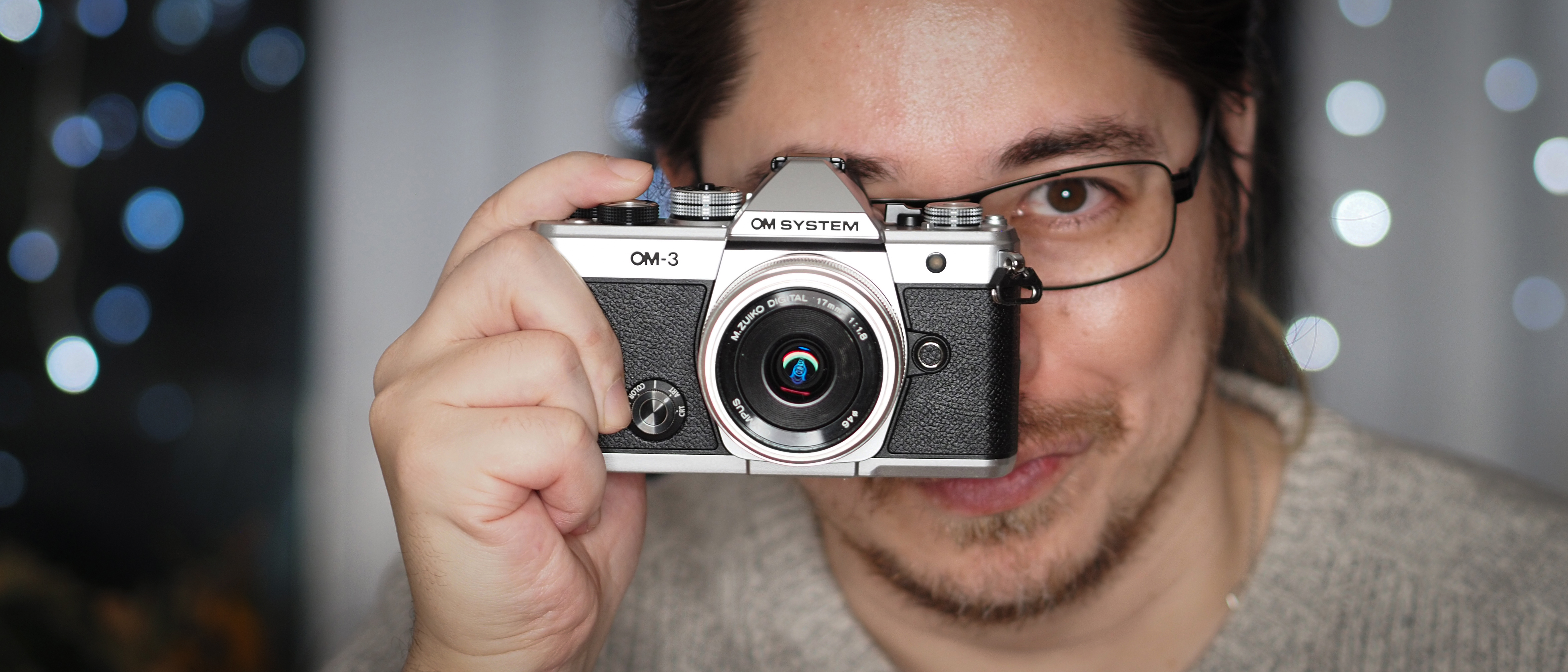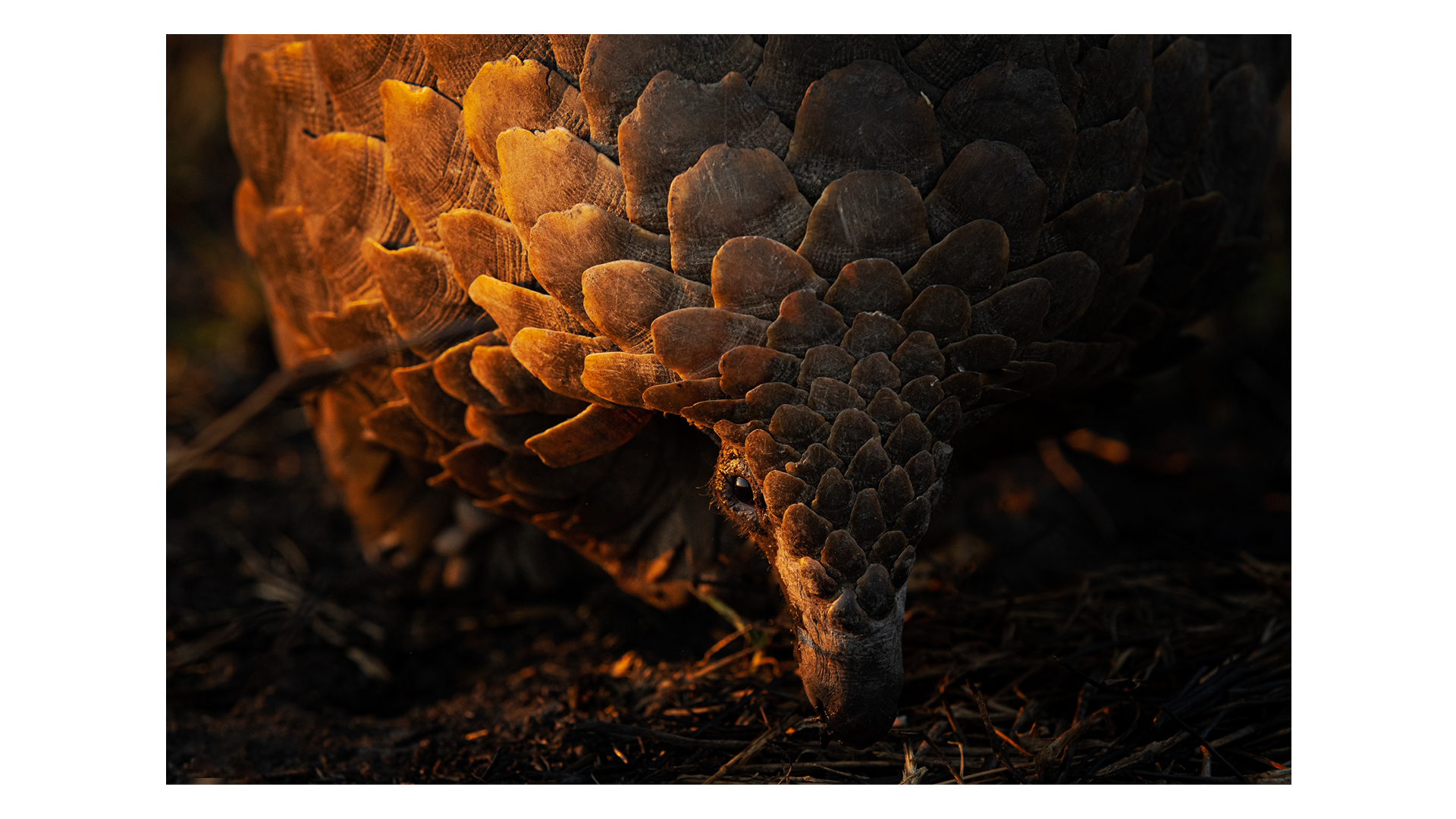Digital Camera World Verdict
The OM System OM-3 is the camera that I've been waiting for since 2016. It's the spiritual successor to the legendary Olympus PEN-F – only bigger, better, more. This camera offers the flagship firepower of the OM-1 Mark II, married with the creativity of the PEN-F and the iconic looks of Olympus' classic film SLRs. The usual trolls will whine about Micro Four Thirds, and it's down to you whether or not you buy into the narrative. But it can't be disputed that the OM-3 (next to the OM-1 Mark II) offers the most advanced computational photography on the market, with the most versatile creative options and the most beautiful body this side of a Fujifilm camera. Like the PEN-F, this is another future classic.
Pros
- +
Beautiful, SLR-like body
- +
Flagship technology
- +
Amazing creative controls
- +
Computational photography powerhouse
Cons
- -
Single memory card slot
- -
No joystick
- -
Native 20.4MP resolution
- -
Connection covers can come open too easily
Why you can trust Digital Camera World
There's a lot I want to say about the OM System OM-3. But the two most pertinent things are that 1) this is the PEN-F successor that Olympus fans have been waiting nearly a decade for, and 2) this is the camera that out-Fujifilms Fujifilm.
The OM System OM-3 is truly a gestalt product. It has the flagship firepower of the OM System OM-1 Mark II, with its cutting-edge computational photography. It has the handcrafted creativity of the Olympus PEN-F, with the ahead-of-its-time Creative Dial. And it has the iconic shape and silhouette of its namesake, the Olympus OM-3, with its timeless design by Yoshihisa Maitani.
@digitalcameraworld ♬ In Love With You - BLVKSHP
But again, in trying to sum up a camera that is more than the sum of its parts, it's the PEN-F sequel I've been waiting for since 2016, and a camera that gives Fujifilm's finest a run for their money. Film simulations, computational photography, superb algorithmic autofocus… the OM System OM-3 is a creative tool as potent as Salvador Dali dabbing like a lunatic.
Of course, naysayers will decry the Micro Four Thirds sensor and insist that it isn't capable enough. This isn't the place for that discussion (though I will say that I've had more published work and satisfied clients with my OM / Olympus kit than my full-frame Canon gear), but I invite you to consider this camera with an open mind – because, unless you own an OM-1 Mark II, it does a lot of things that no other camera is capable of.
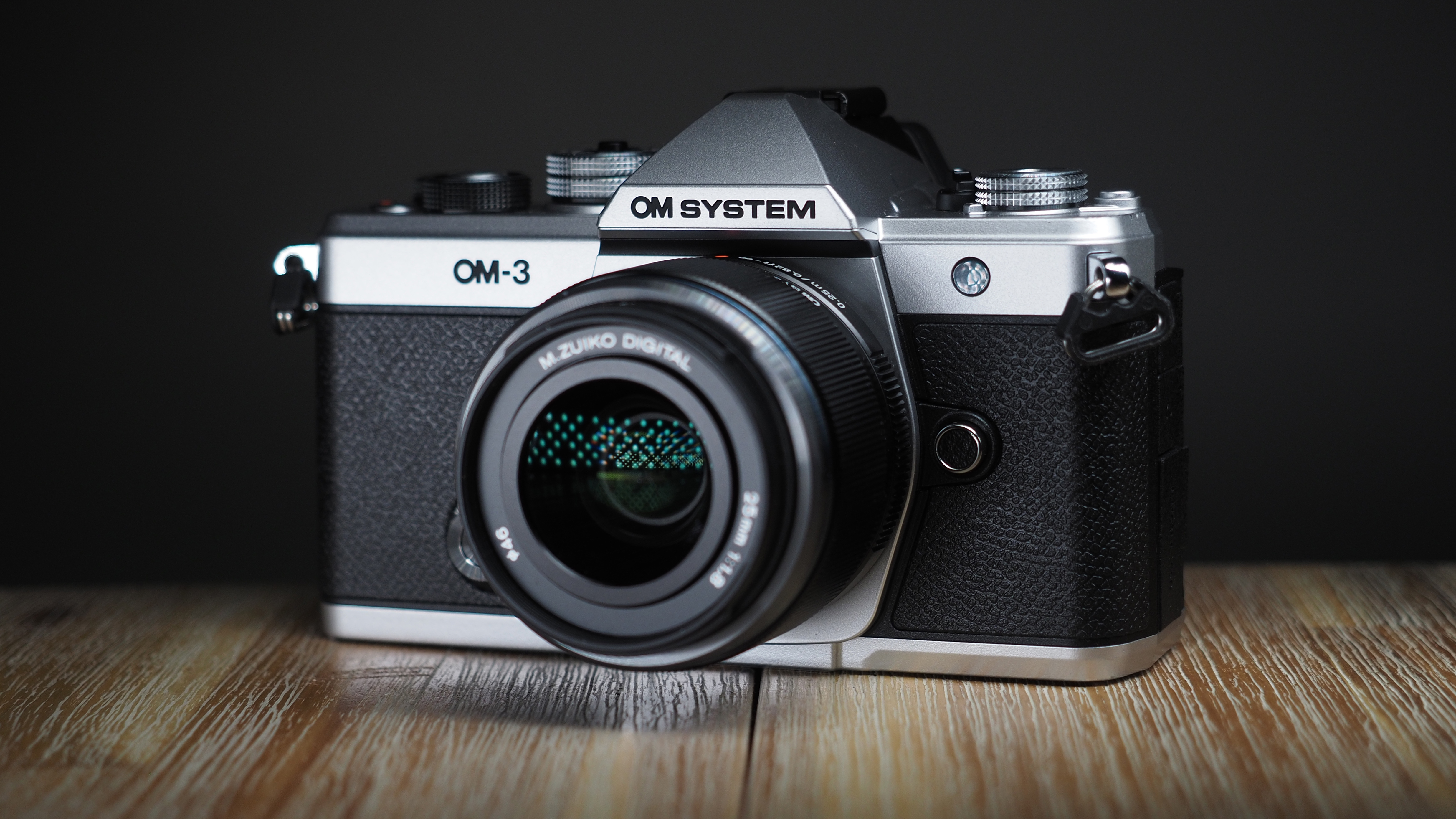
OM System OM-3: Specifications
Sensor | 20.4MP Micro Four Thirds stacked, BSI, Live MOS | Row 0 - Cell 2 |
Lens mount | Micro Four Thirds | Row 1 - Cell 2 |
Autofocus | Quad Pixel, 1,053 cross-type hybrid phase detect | Row 2 - Cell 2 |
Image stabilization | Body only: 6.5 stops center (5.5 stops corners) • With Sync IS lenses: 7.5 stops center (6.5 corners) | Row 3 - Cell 2 |
Weather sealing | IP53 certified | Row 4 - Cell 2 |
ISO range | 200 to 25,600 (exp 80 to 102,400) | Row 5 - Cell 2 |
Max video resolution | Up to 4K 60p (High-Speed FullHD 240p) | Row 6 - Cell 2 |
Max burst | 120fps with S-AF • 50fps with C-AF | Row 7 - Cell 2 |
Viewfinder | OLED, 2.36 million dots | Row 8 - Cell 2 |
Rear screen | 3-inch, 1.62 million dots | Row 9 - Cell 2 |
Memory | 1x SD UHS-II | Row 10 - Cell 2 |
Connectivity | WiFi, Bluetooth, USB-C, Micro HDMI, headphone jack, microphone jack | Row 11 - Cell 2 |
Dimensions | 139.3 x 88.9 x 45.8mm | Row 12 - Cell 2 |
Weight | 413g (body only) | Row 13 - Cell 2 |
OM System OM-3: Build & handling
It won't have escaped your attention that the OM System OM-3 is beautiful. The brand's other cameras, like the OM System OM-5, have traditionally taken their design aesthetic from classic Olympus SLRs, but no camera has duplicated the lines and silhouette quite as faithfully as the OM-3.
Of course, adhering to the original Olympus OM-3 design means that there is no grip on the front (much like the PEN-F before it) though there is a thumbrest on the back. I know many folks chafe at this, feeling that no grip makes a camera uncomfortable or doesn't give enough purchase to hold it.
Personally, it doesn't bother me – I used the OM-3 for days on end without any discomfort, and I don't use a camera strap and it never once came close to slipping out of my hands. Honestly I'd rather keep the flat face of the camera to maintain the aesthetics – as was the case with the PEN-F, where there were no shortage of sexy-looking third-party grips if anyone wanted to add one.
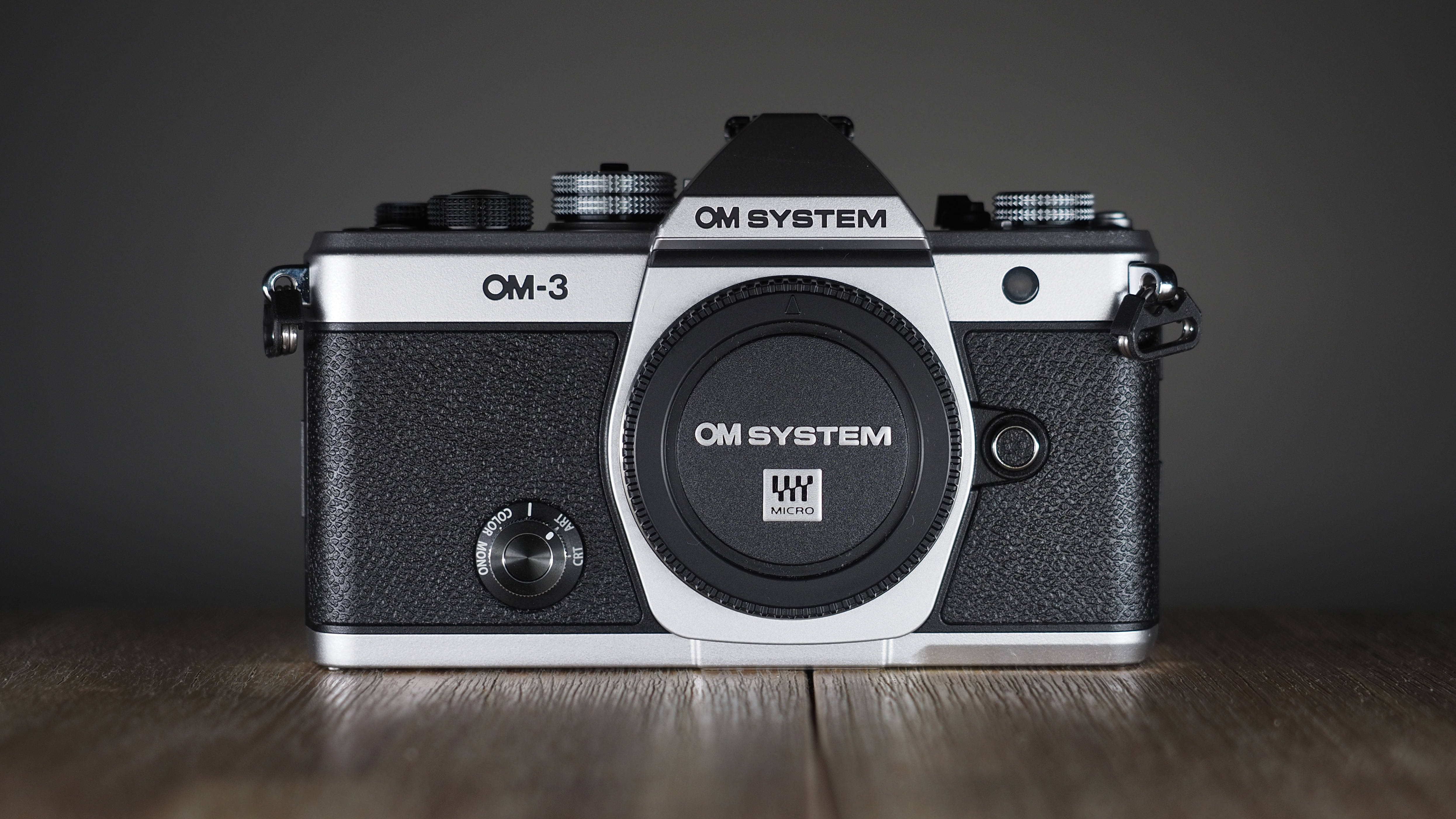
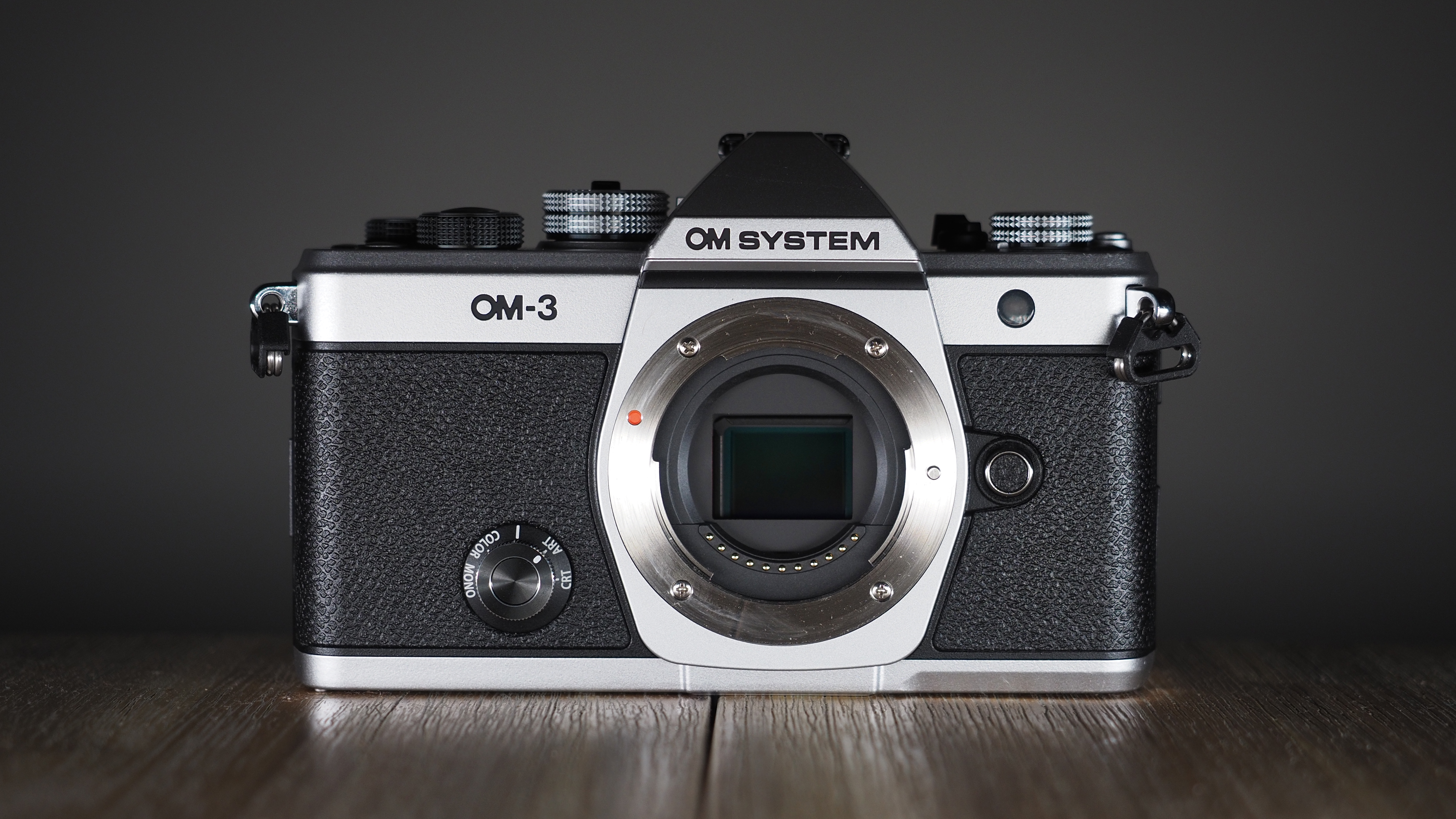
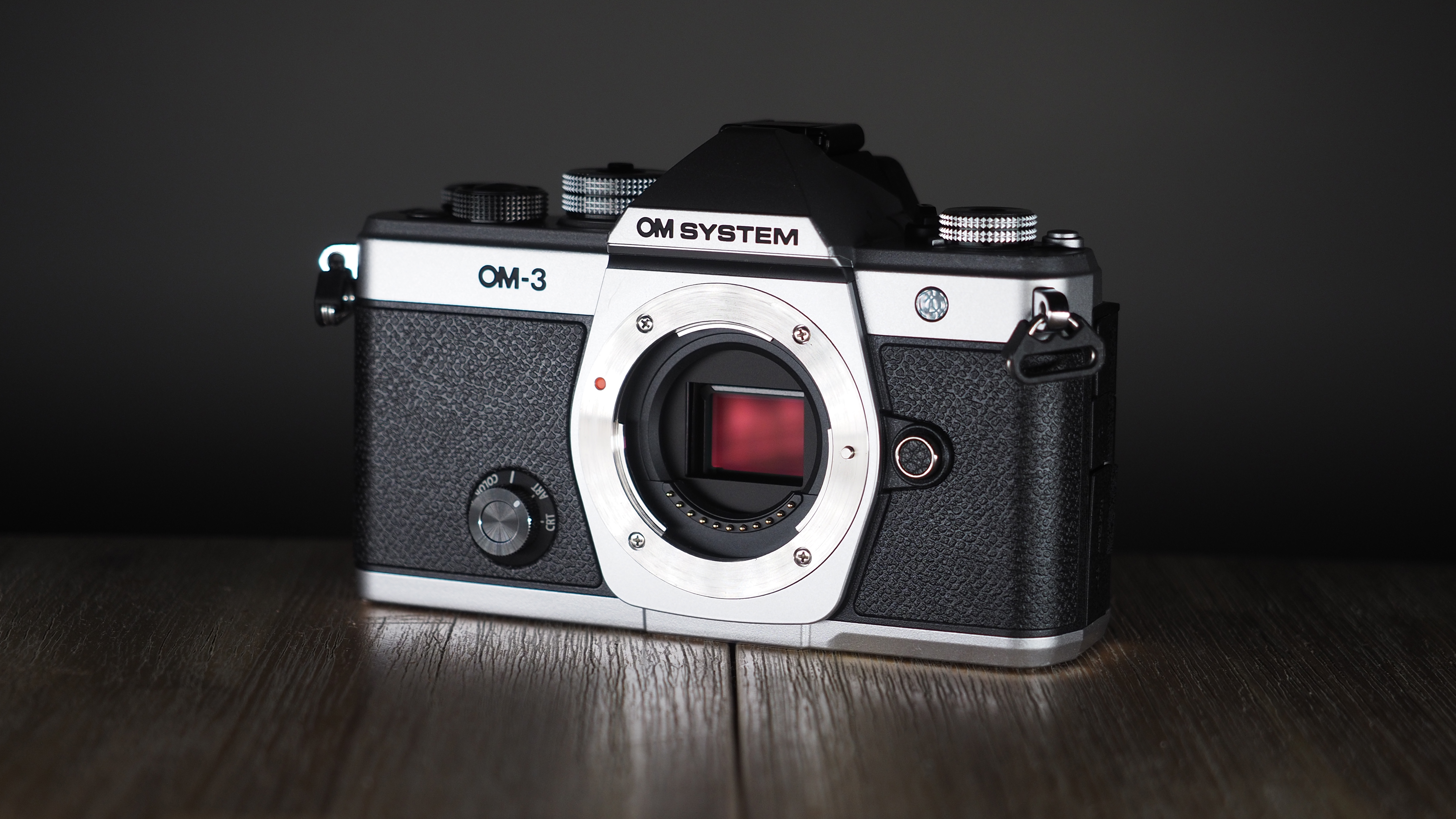
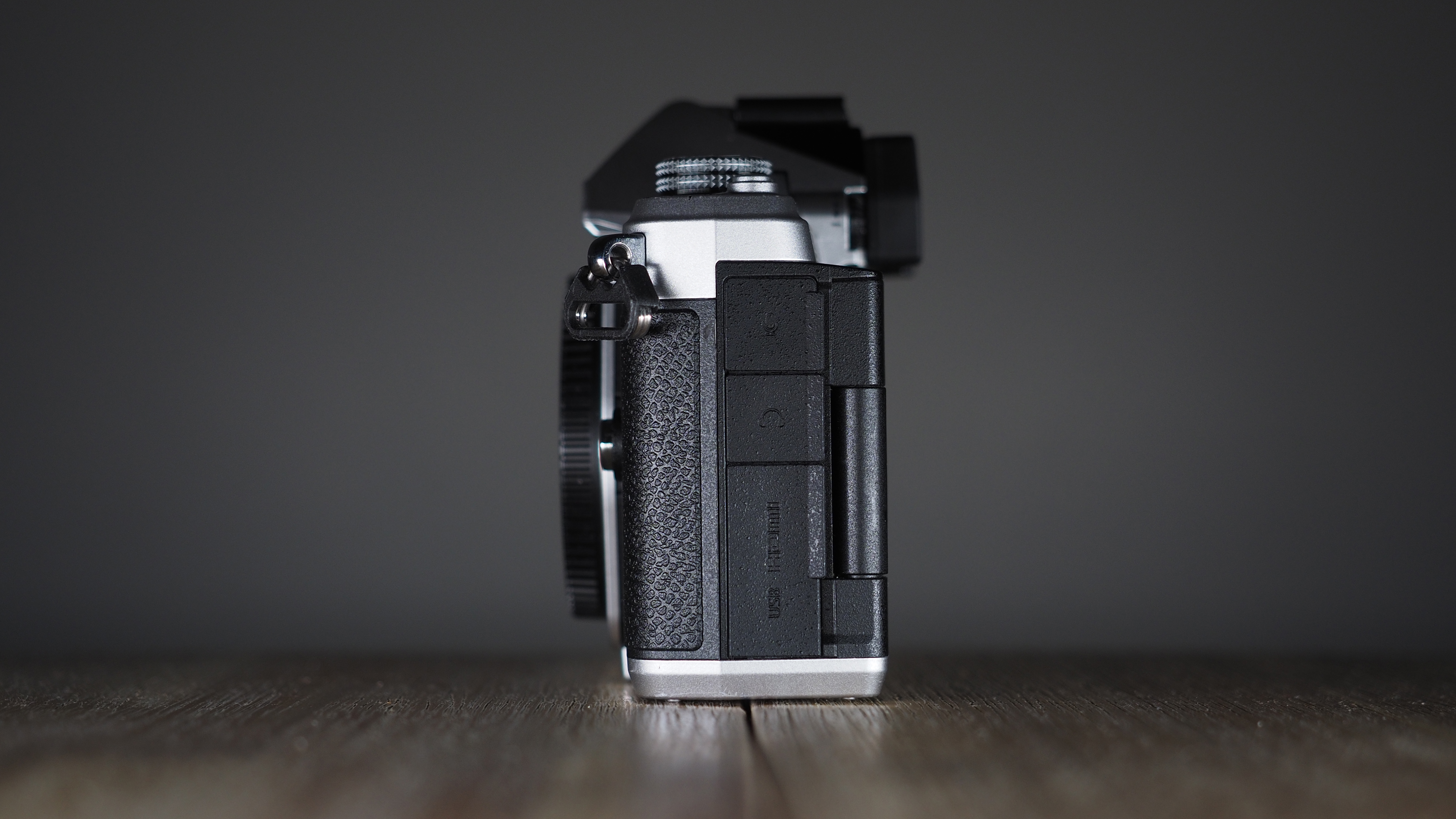
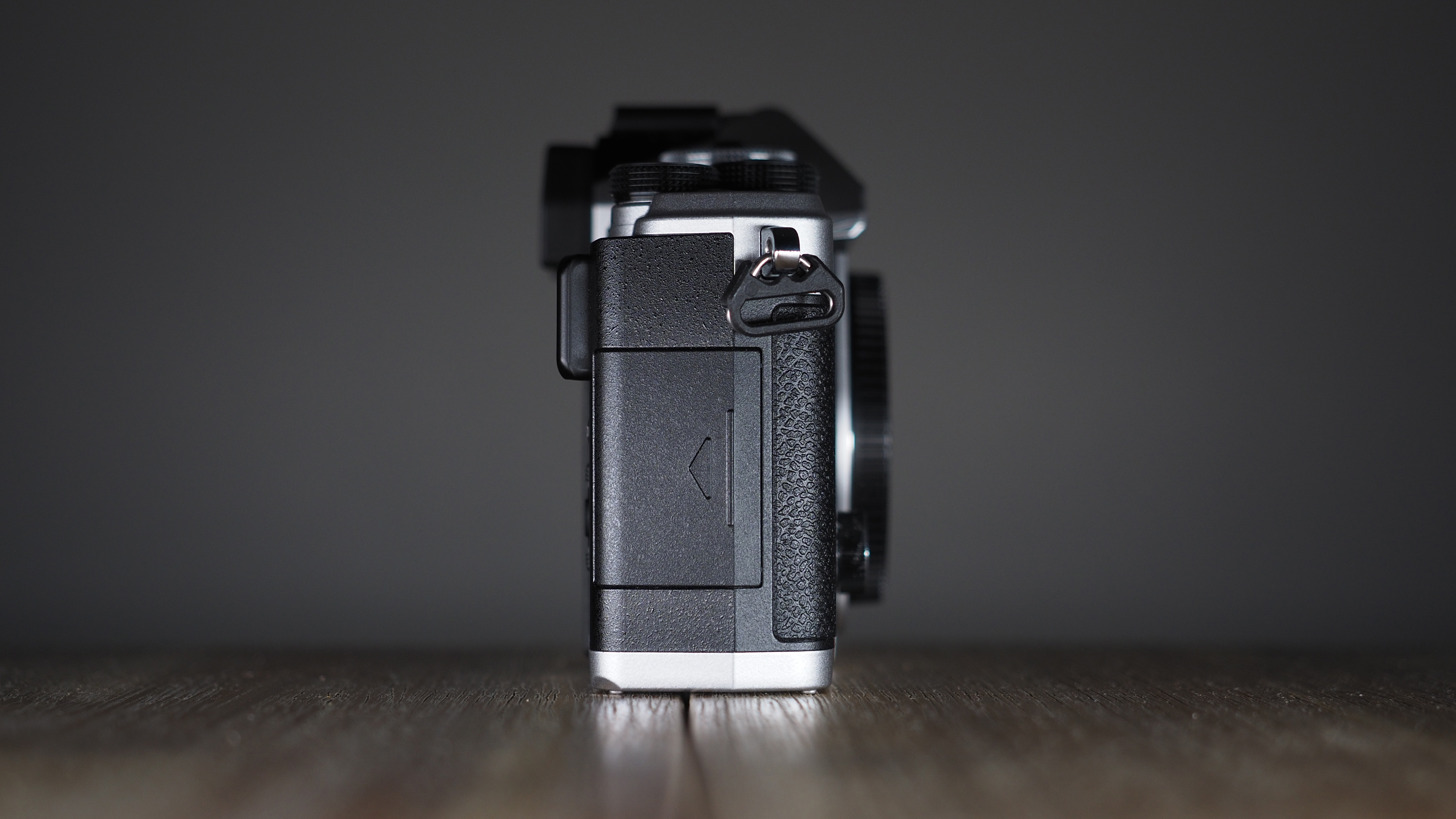
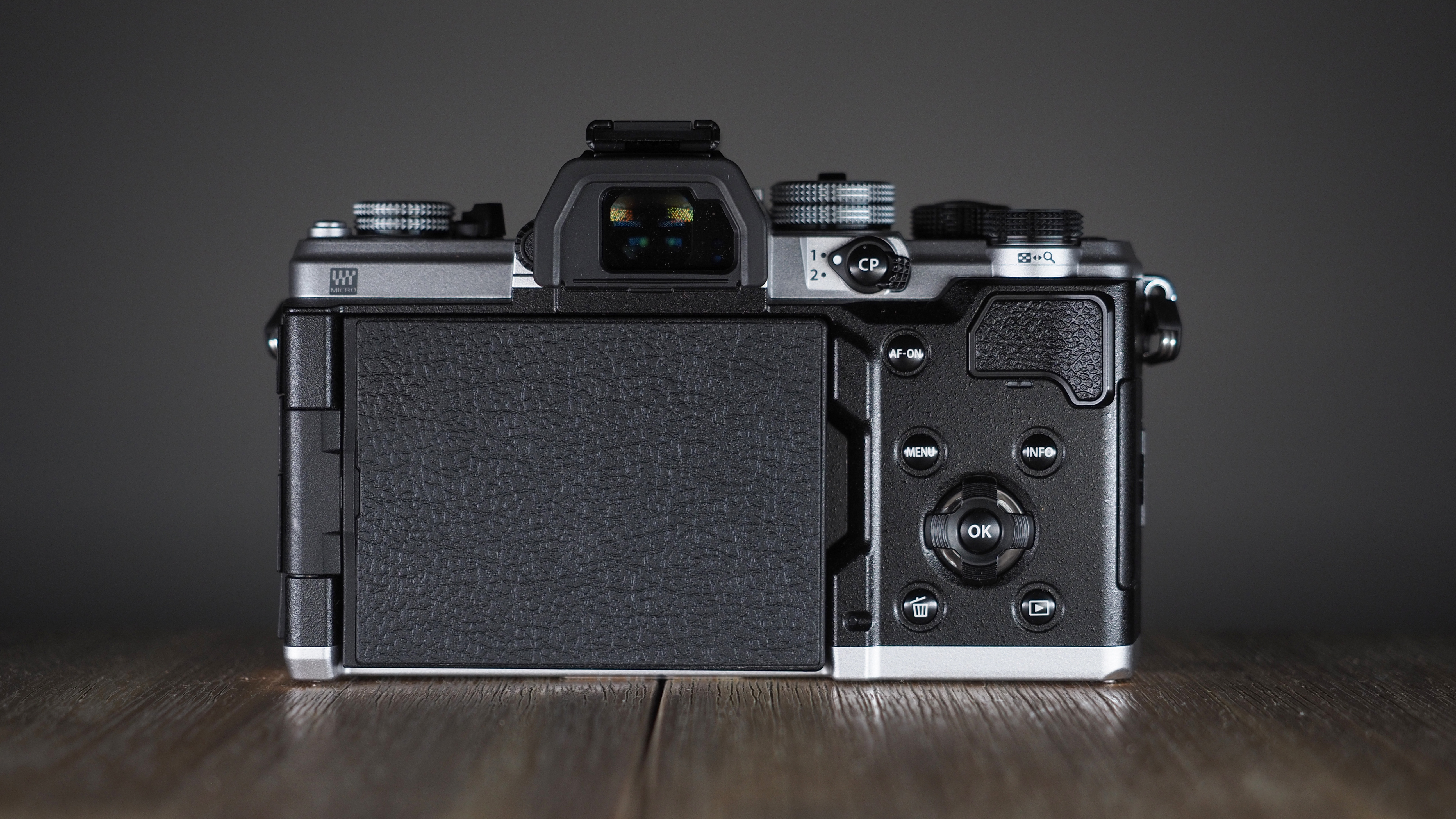
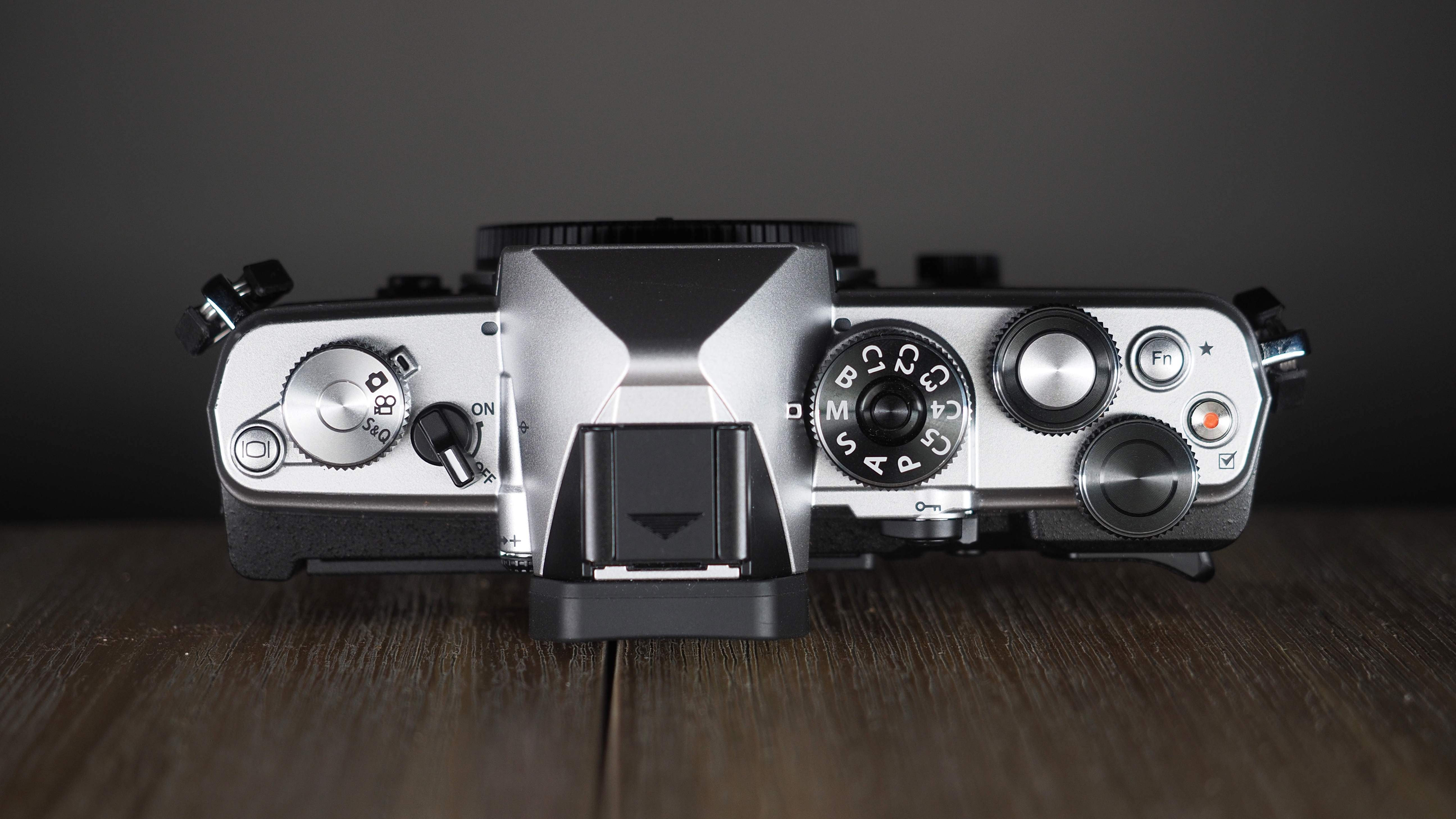
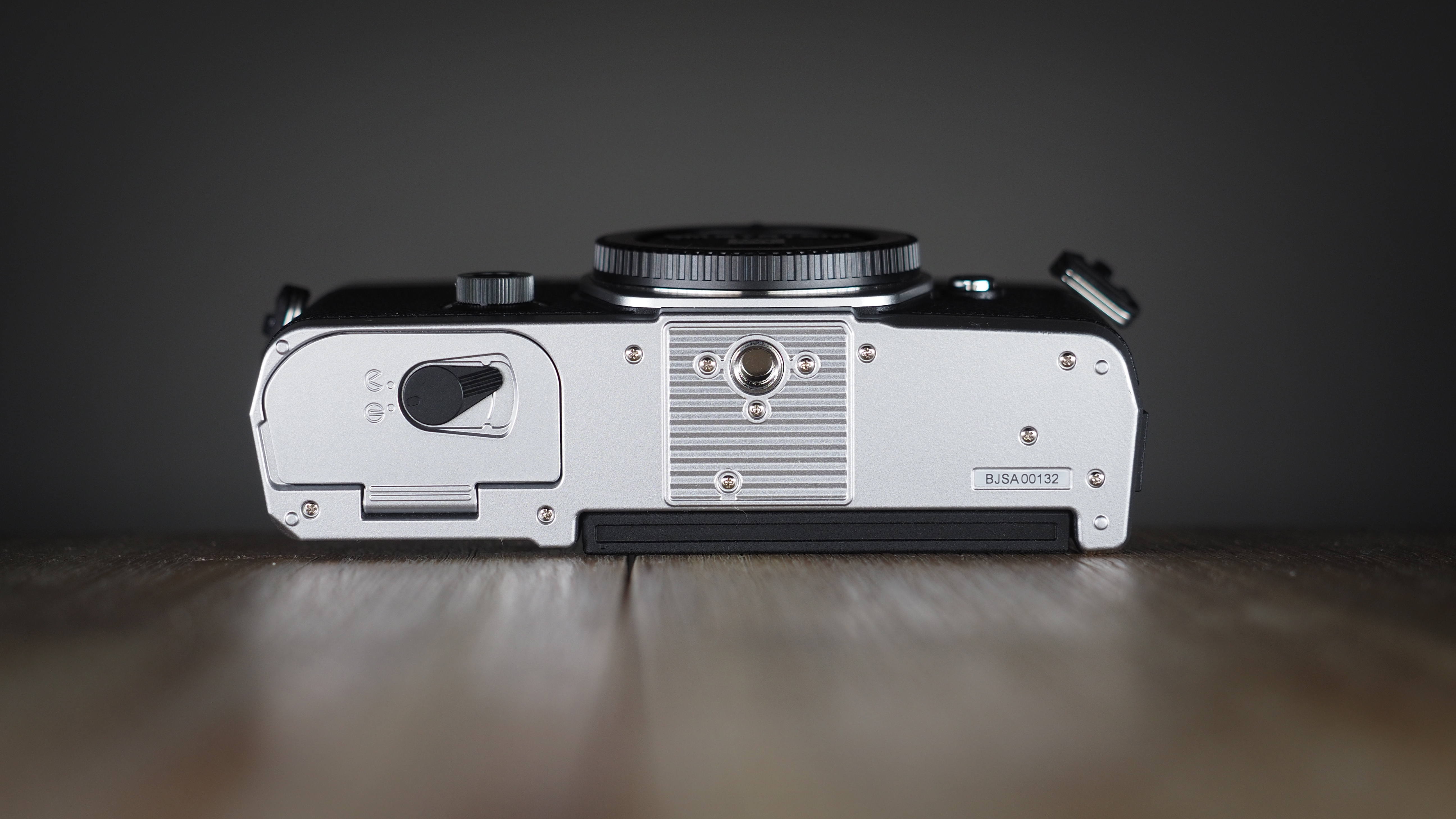
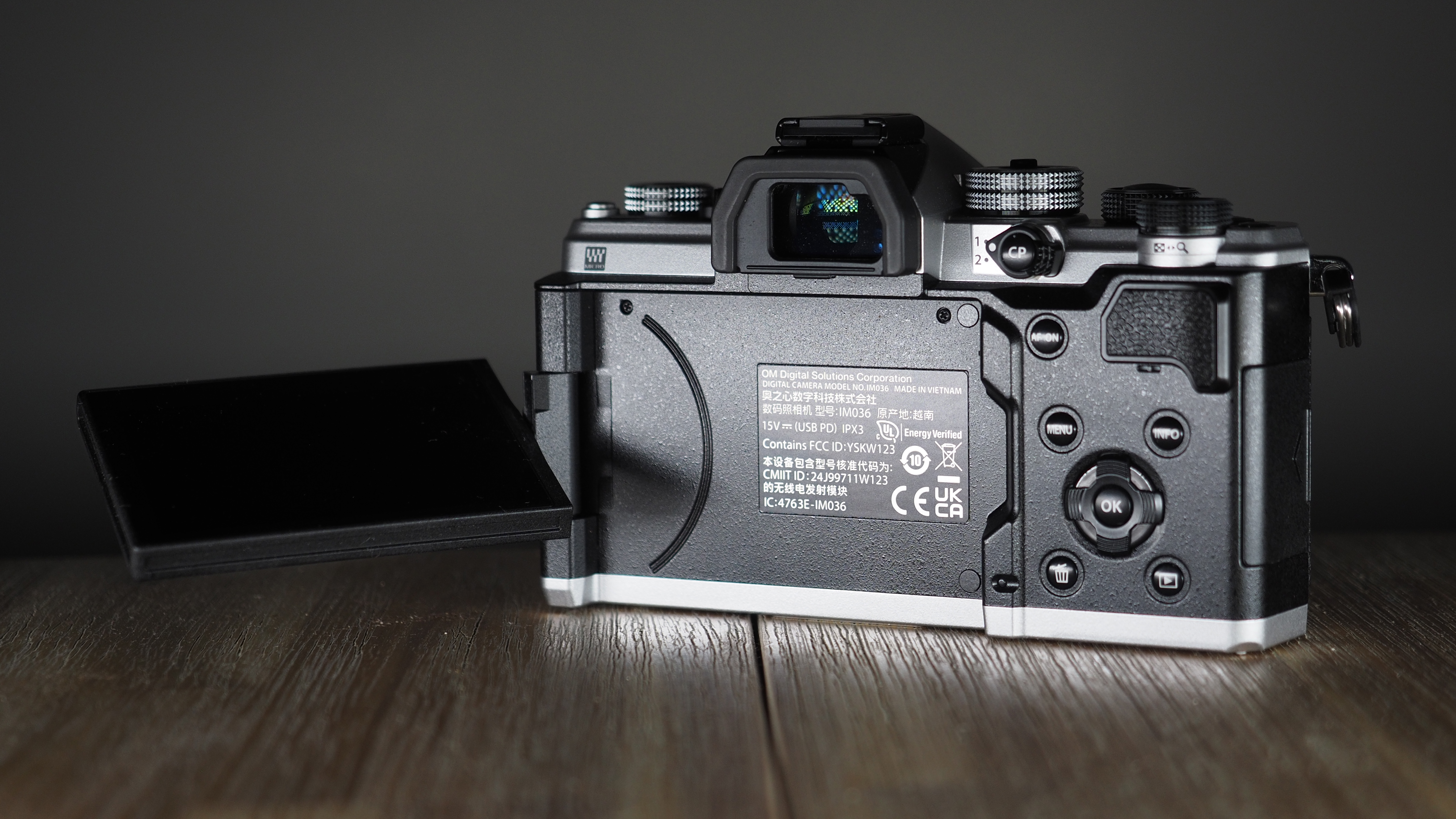
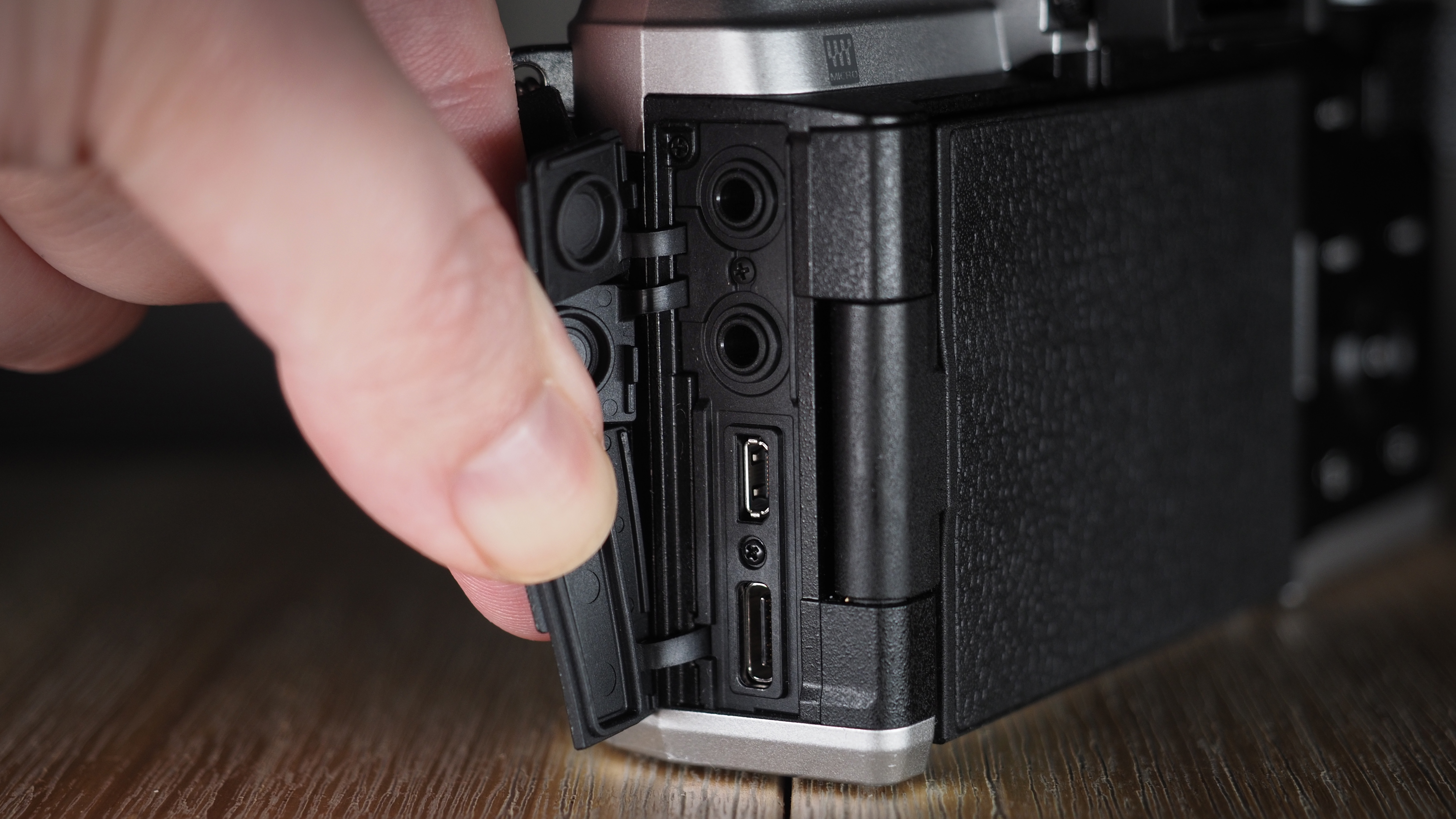
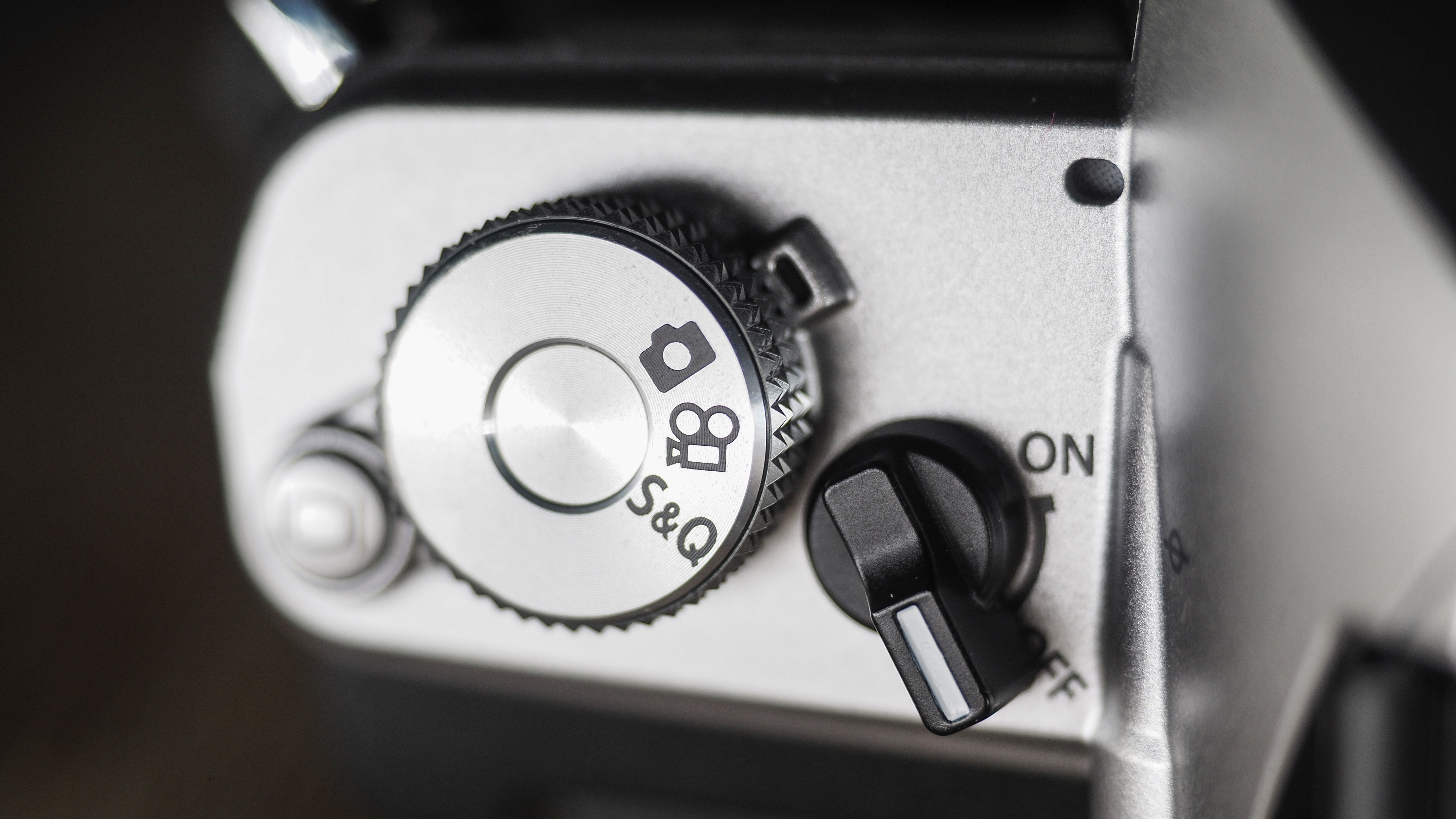
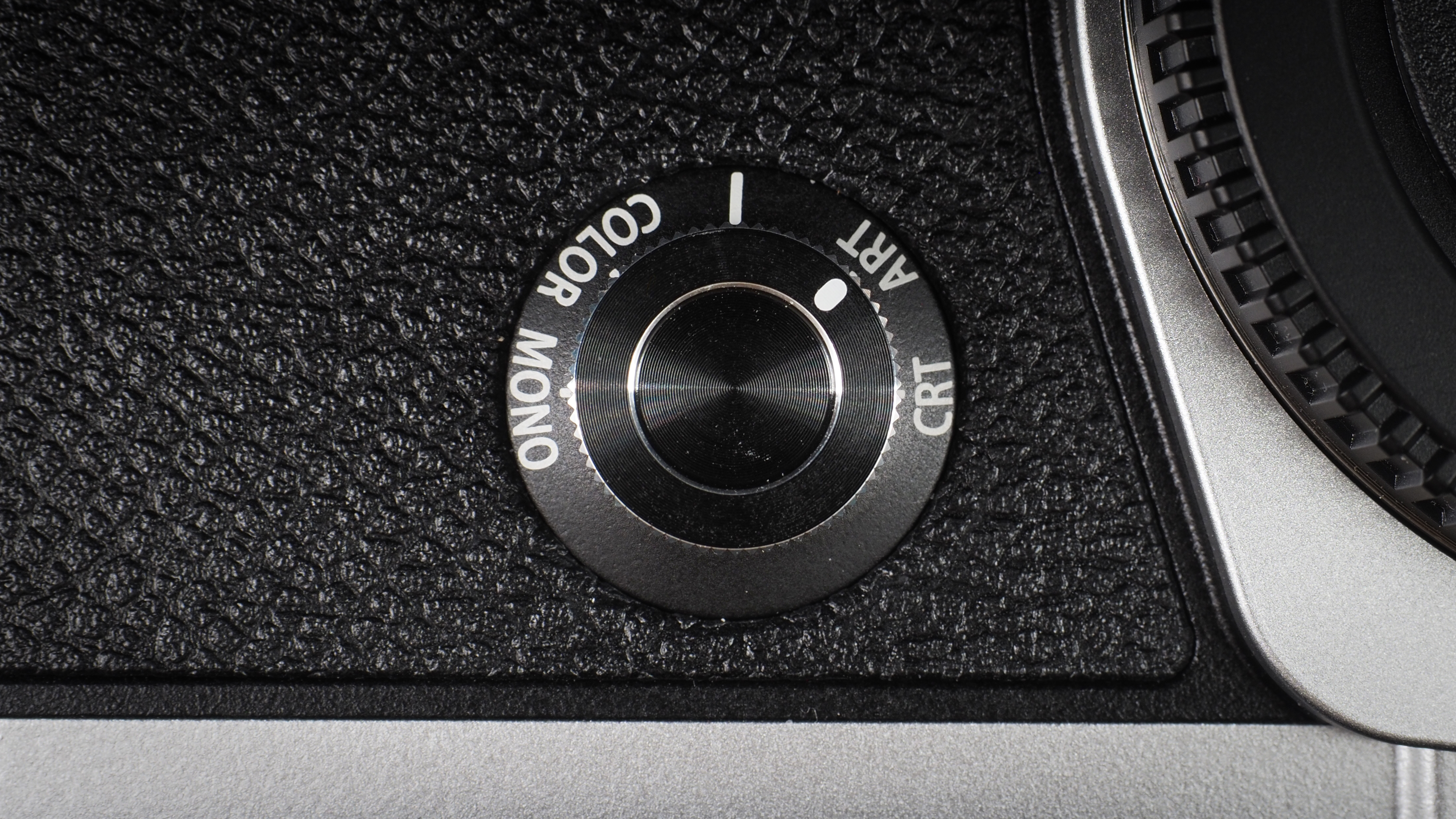
Obviously, the timeless design has had some modern mirrorless embellishments. Crucially, the Creative Dial from the PEN-F has been resurrected – sitting proudly on the front of the camera, it offers fingertip access to a wealth of creative tools, from color and mono film profiles to Art Filters to the custom color creator.
The top of the camera sees a first for OM: the addition of a dedicated dial, on the top-left, to flick between photo, video and S&Q (Slow & Quick) modes. The OM-3 is arming you with creative potential and inviting you to unleash it, in whatever form takes your fancy at any given time.
Another first is a dedicated CP button on the rear of the camera, giving you quick access to the camera's Computational Photography modes. A quick stab unlock things like Live ND and Live GND (software-powered neutral density and grad filters), High Res Shot (50MP handheld and 80MP on a tripod), focus stacking and multiple exposure shooting.
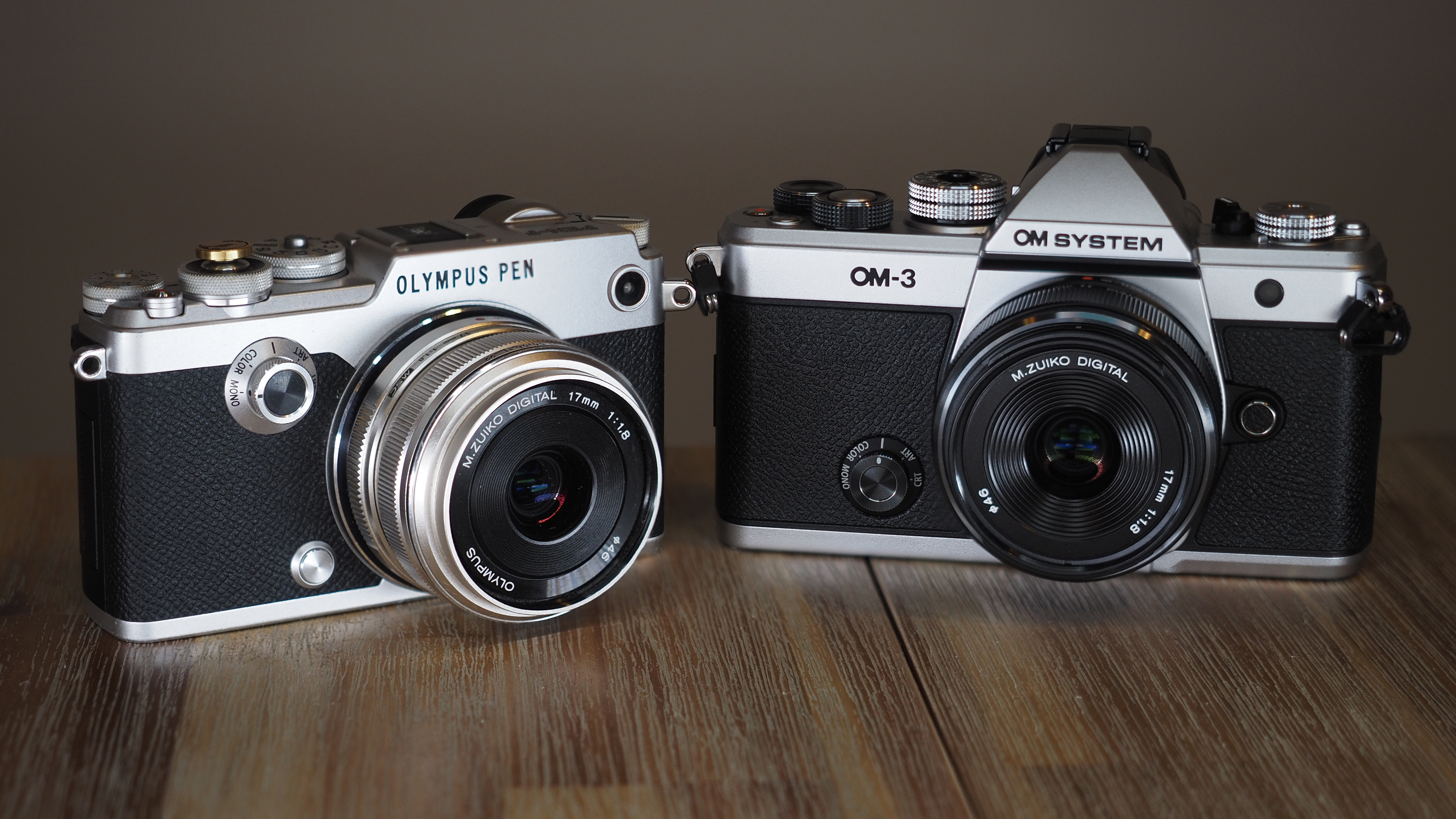
Unlike recent generations of SLR-styled OM / Olympus bodies, the OM-3 boasts metal construction for a reassuringly solid, substantial feel that I've missed since the E-M5 Mark II. It's weather sealed, too, rated to IP53 certification – and having used this extensively in the rain (rather more extensively than I would have liked!) I still trust this brand more than any other in bad weather. My one quibble is that the doors covering the ports and connections can be knocked open a little too easily.
What might surprise some is the size of the OM-3, as it's notably bigger than both the E-M5 / OM-5 and PEN-F, being comparable in size to the SLRs after which it takes its shape. Still, OM / Olympus has always made some of the smallest camera bodies on the market – so this is by no means a big camera, just a bigger one than I expected.
As such it accepts the larger, higher-capacity, BLX-1 batteries of the OM-1 family – no doubt a requirement to power all the computational processing and the Quad Pixel autofocus system.
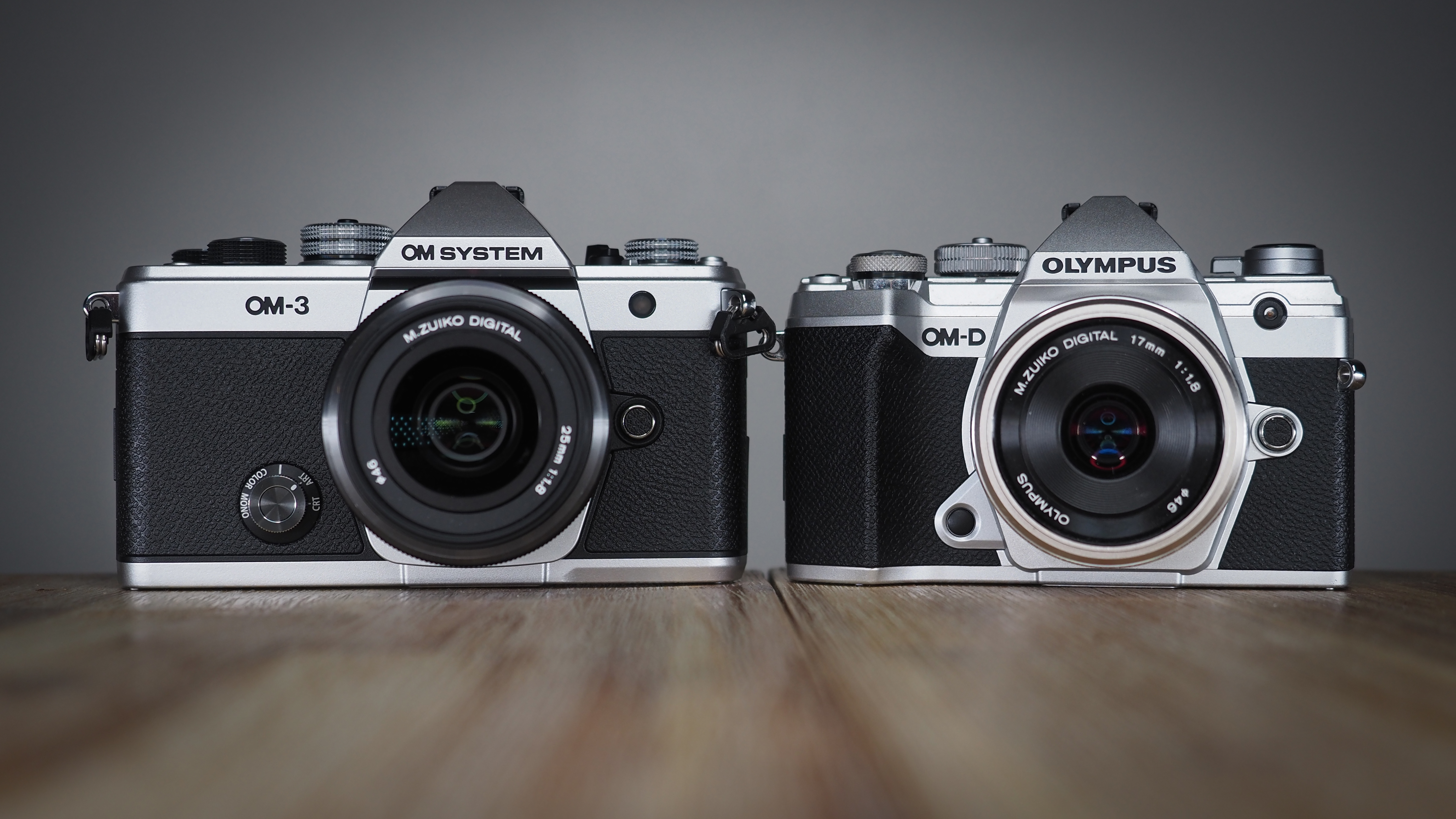
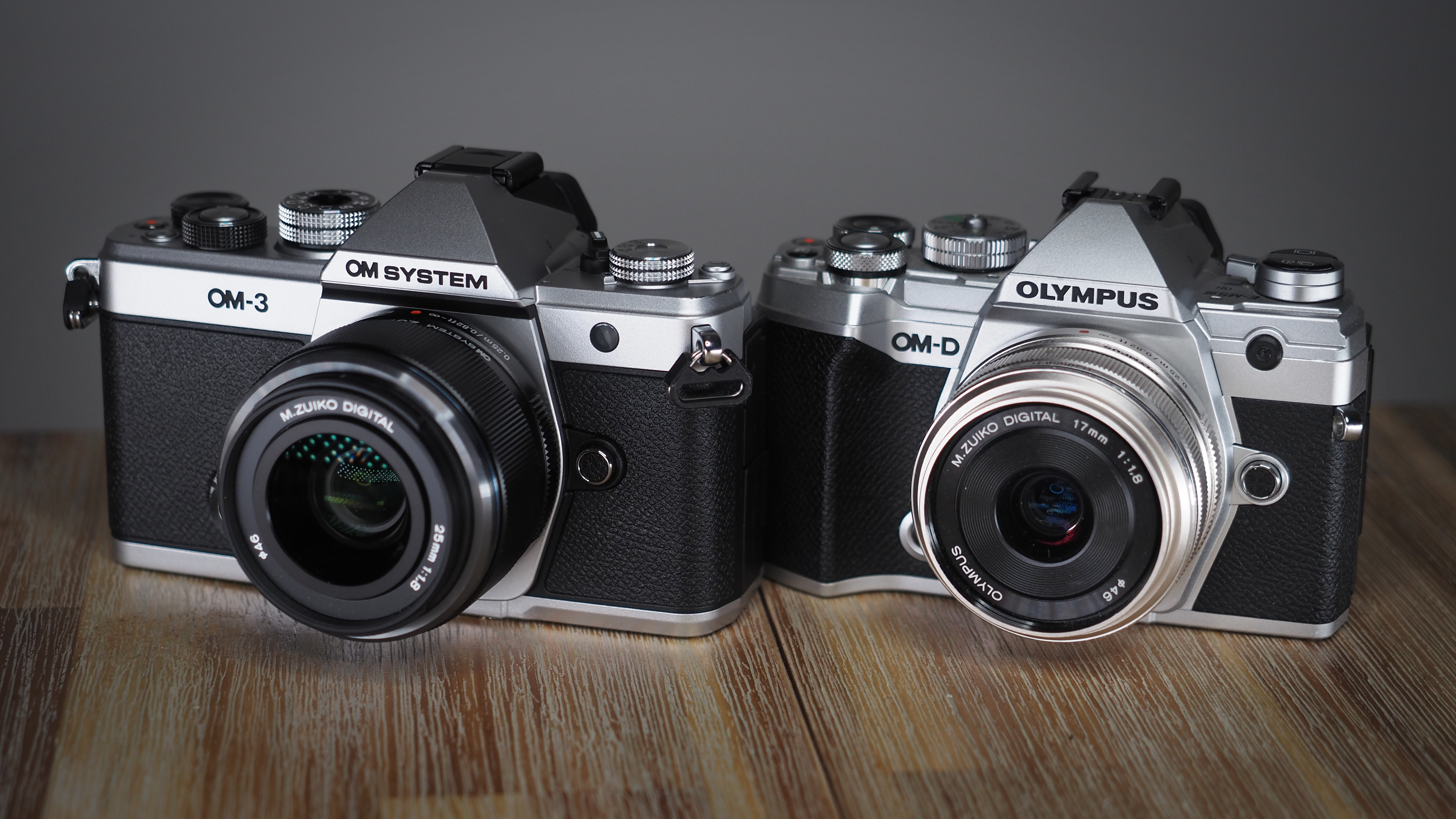
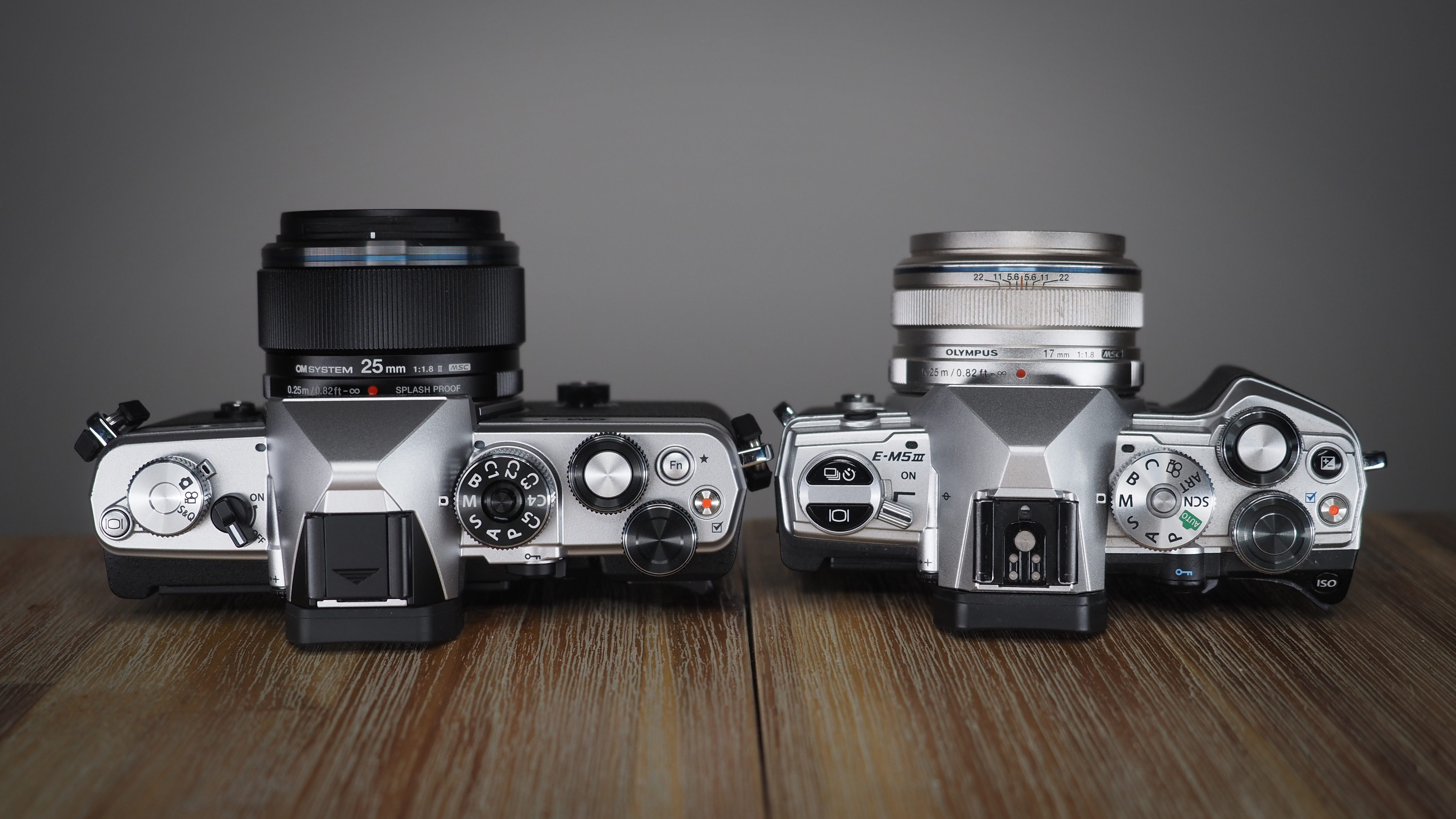
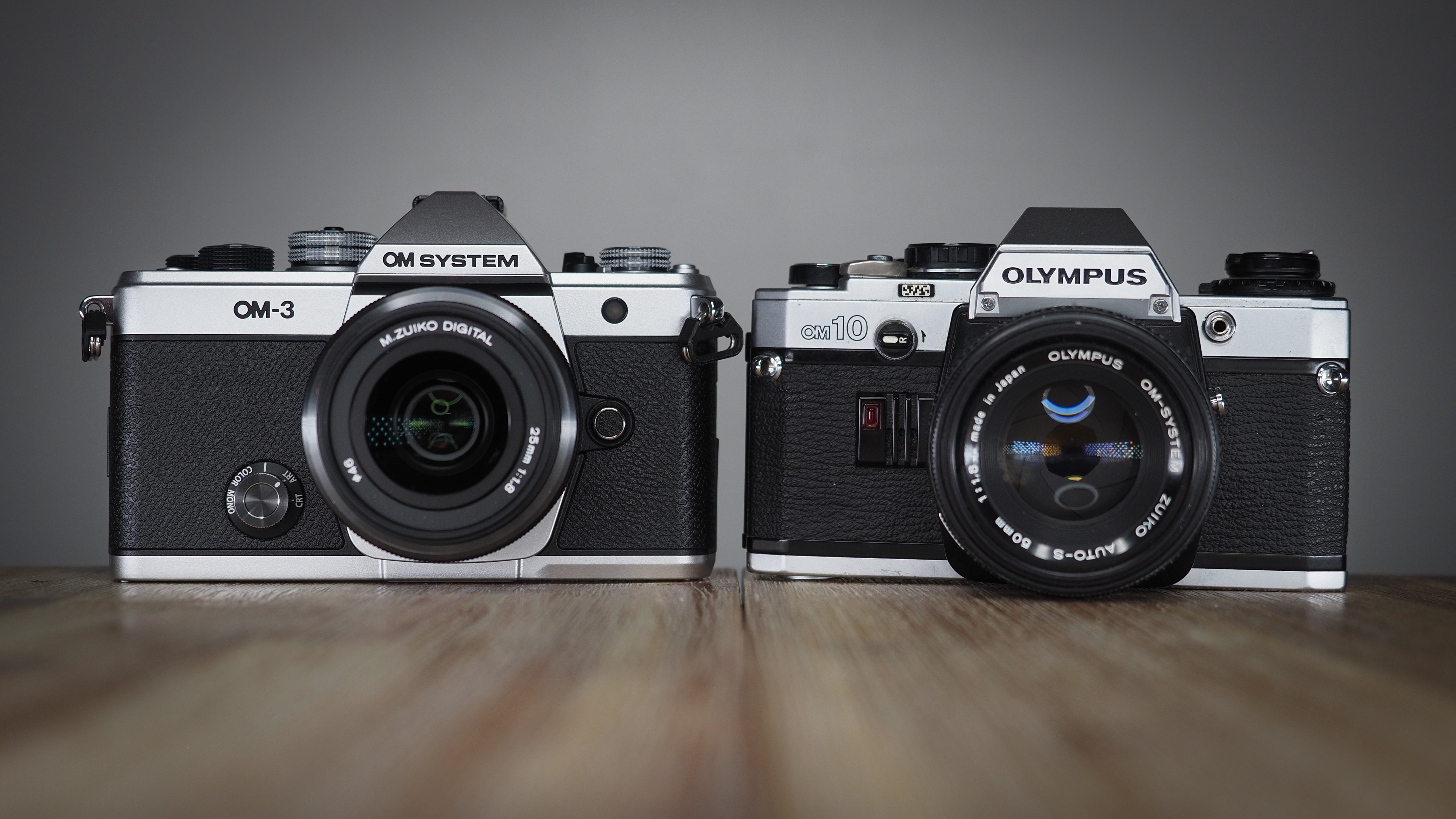
OM System OM-3: Photo performance
As you might expect, the core photographic performance is identical to the OM-1 Mark II (with which the OM-3 shares its technology). Everything transfers here and behaves exactly as it does on the flagship – although anecdotally I found the autofocus performance to be even better.
Perhaps the OM-3 is running more recent algorithms than the OM-1 Mark II, but particularly with birding the AF was much quicker and stickier at identifying and staying with subjects – even when I was using the rather old and clunky Olympus M.Zuiko 75-300mm lens. Either way, OM's Quad Pixel AF tech is coming on leaps and bounds. It's not quite at Canon and Sony levels but, I tell you what, it's catching up.
Elsewhere you'll find the blistering burst modes, offering up to 50fps with continuous autofocus and 120fps with fixed focus – along with Pro Capture, the pre-shooting mode that enables you to record the frames that took place before you even clicked the shutter. OM debuted this technology back in 2000, on the Olympus E100 RS, and for my money it still does it better than anyone else.

You also get things like the Live ND and Live GND modes – which are the coolest camera features I've ever seen – enabling you to shoot with software-powered neutral density and grad filters, and leave the bulky physical glass at home. Pixel shift-powered High Res Shot mode enables you to shoot 14-bit RAW files up to 80MP, with 2 stops of noise reduction for beautiful fidelity if you shoot static subjects.
Image stabilization is rated at 6.5 stops (or 7.5 with a Sync IS lens), which you might notice is a stop lower than the maximum 7.5 (8.5 with Sync IS) boasted by the OM-1 Mark II. I need to confirm this, but my understanding is that this is down to the new CIPA measurements (which is the same reason that the Nikon P1100 is listed as having a stop less compensation than the P1000, despite having identical technology).
Whatever the reason, it's as rock-solid as ever – even when photographing birds at 600mm handheld, or shooting a handheld 15-image focus stack. Almost every camera these days has good IS, but the smaller sensor in Micro Four Thirds cameras just makes them so much easier to stabilize – and shooting feels a lot more sturdy as a result.

Beyond all the clever flagship tech, though, the real fun – and the heart of the OM System OM-3's shooting experience – is the Creative Dial. I know I sound like a broken record, but sue me; it's brilliant. Back when the Dial debuted on the PEN-F, the industry was snide and cynical. Naysayers said that people who shot JPEG weren't real photographers, and mocked anyone for using filters. Funny how nobody says that any more, now that Fujifilm has cracked the mainstream.
Anyway, the Creative Dial unlocks an arsenal of customizable options. At the fore are the eight film profile presets, four each for color and black-and-white. For the former you've got Natural, Chrome Film Vivid, Chrome Film Rich Color (Velvia fans will be pleased) and Chrome Film Soft Tone. When it comes to monochrome there's Monotone, Classic Film B&W (very Tri-X like), Classic Film IR and Classic Film Low Contrast.
These can be fine-tuned for saturation, highlight and shadow, vignetting, sharpness, contrast, tone effect and even film grain. I know that everyone from Nikon to Panasonic has jumped on the custom recipes bandwagon, but it's great to see this mode back in an OM camera for the first time since 2016 – I've been using my fine-tuned presets on the PEN-F ever since, and I wouldn't be without them.
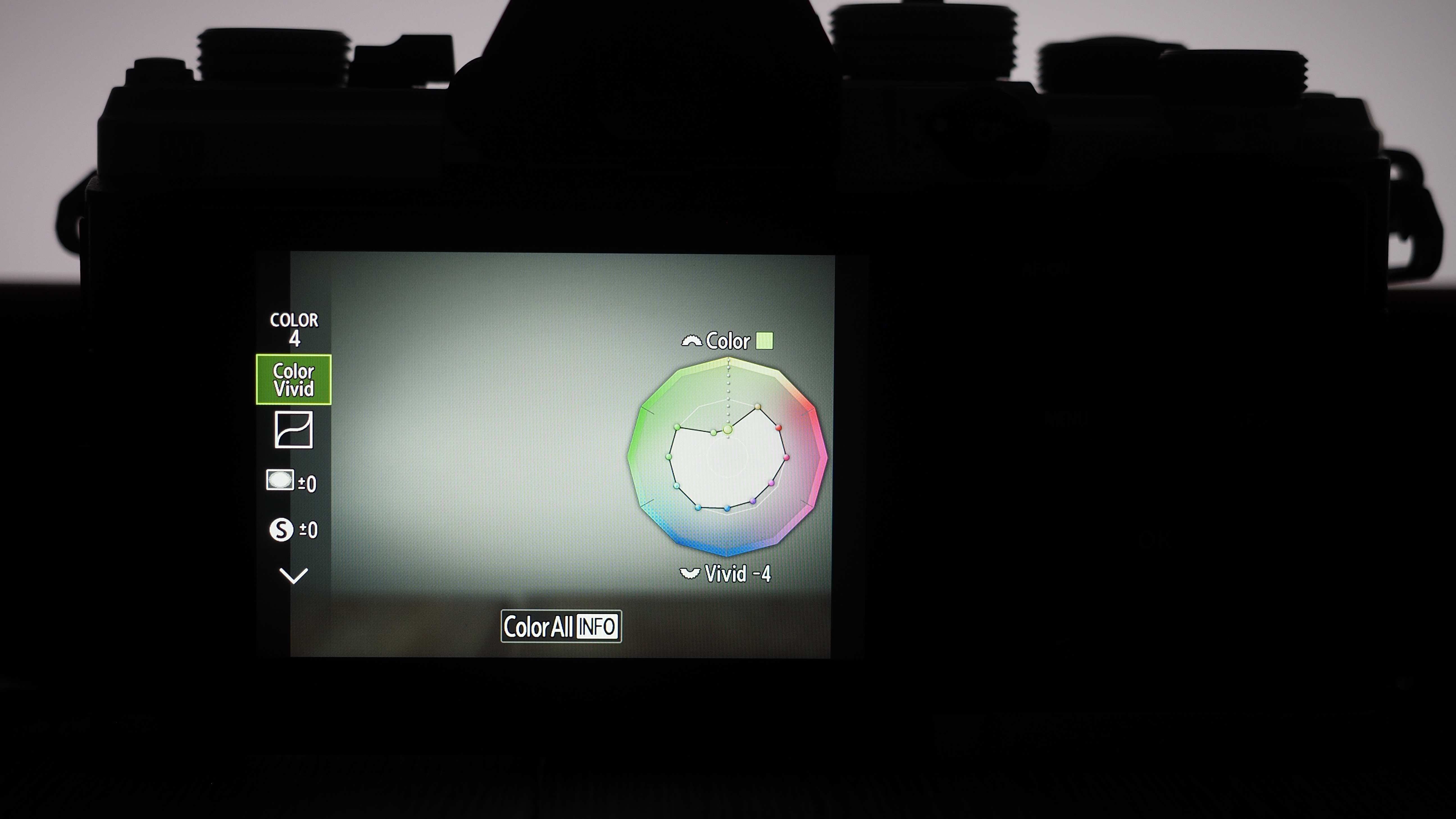
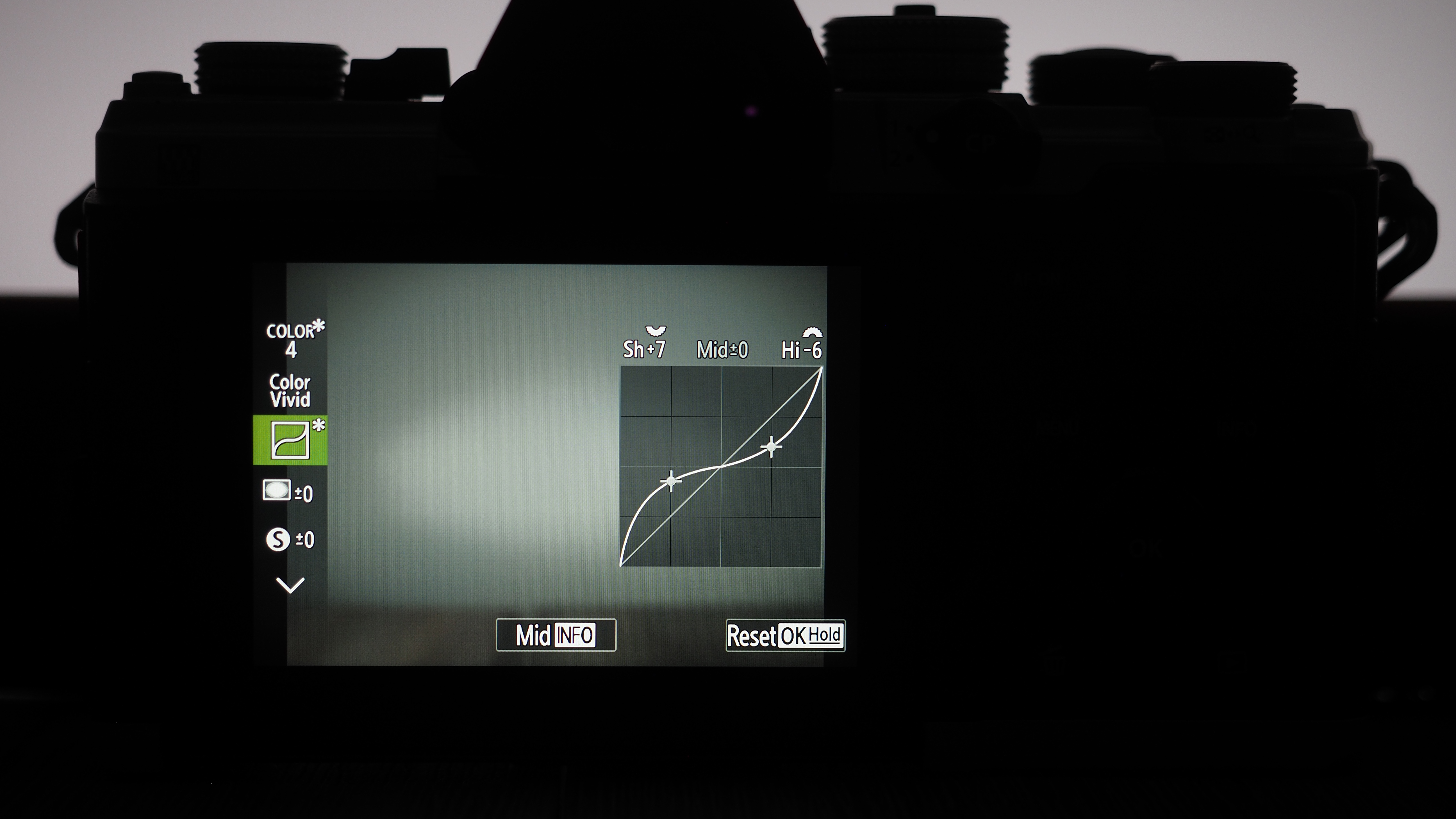
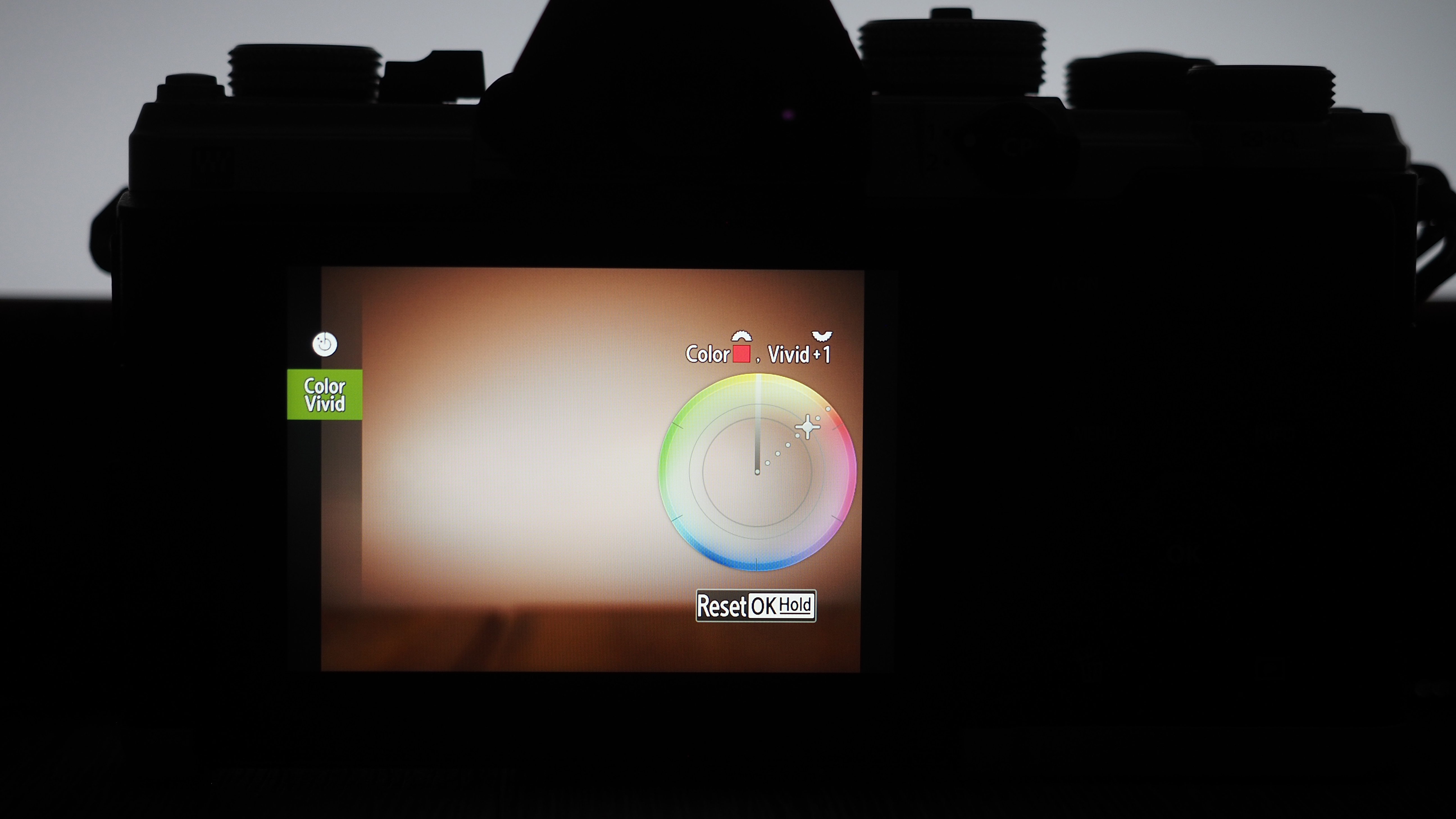
The dial is also your shortcut to the Color Creator, which enables you to amplify the existing hues in your scene or dial out any unwanted colors – the sort of color balancing you might usually do in Photoshop, only here you can do it in-camera, as you're as you take the image, empowering you to capture the scene the way you're really experiencing it.
A good example is a sunset, where you might want to punch up the pinks and golds. Or if you're shooting somewhere like Death Valley, which is a surprisingly desaturated place in person, but you can embellish the existing colors and make it look as punchy as it does in postcards – all in-camera.
And of course there are the trusty OM Art Filters, some of which are admittedly tacky, but others (namely the Vintage, Bleach Bypass and Instant Film options) are genuinely great pre-production tools. Don't take my word for it – Vintage I is the camera filter used by Taylor Swift.

Something worth mentioning is that I was testing the OM-3 side-by-side with the Leica SL3-S, a very capable full-frame camera. But two interesting things happened in that time; first of all, a byproduct of the OM-3's nimble size and tiny lenses was that I took way more in-the-moment, blink-and-you'll-miss it, "decisive moment"-type shots with this camera than the SL3-S.
Which is ironic, given that Leica built its reputation on being the ultimate street camera. But the SL3-S is a bulky full-frame thing, with bulky full-frame lenses; just wrestling it out of a bag is enough to make you miss "the shot". But the OM-3 is so small and agile that I could whip it out of a sling bag in seconds, and so discrete that I could snap street shots quickly and quietly.
The second thing is that I used both cameras to photograph clients – and despite the prevailing myths that "Micro Four Thirds cameras aren't proper cameras" and that "You need to shoot full frame", the clients both liked the Leica images but they loved the OM ones. Take that for what you will.
OM System OM-3: Sample photos



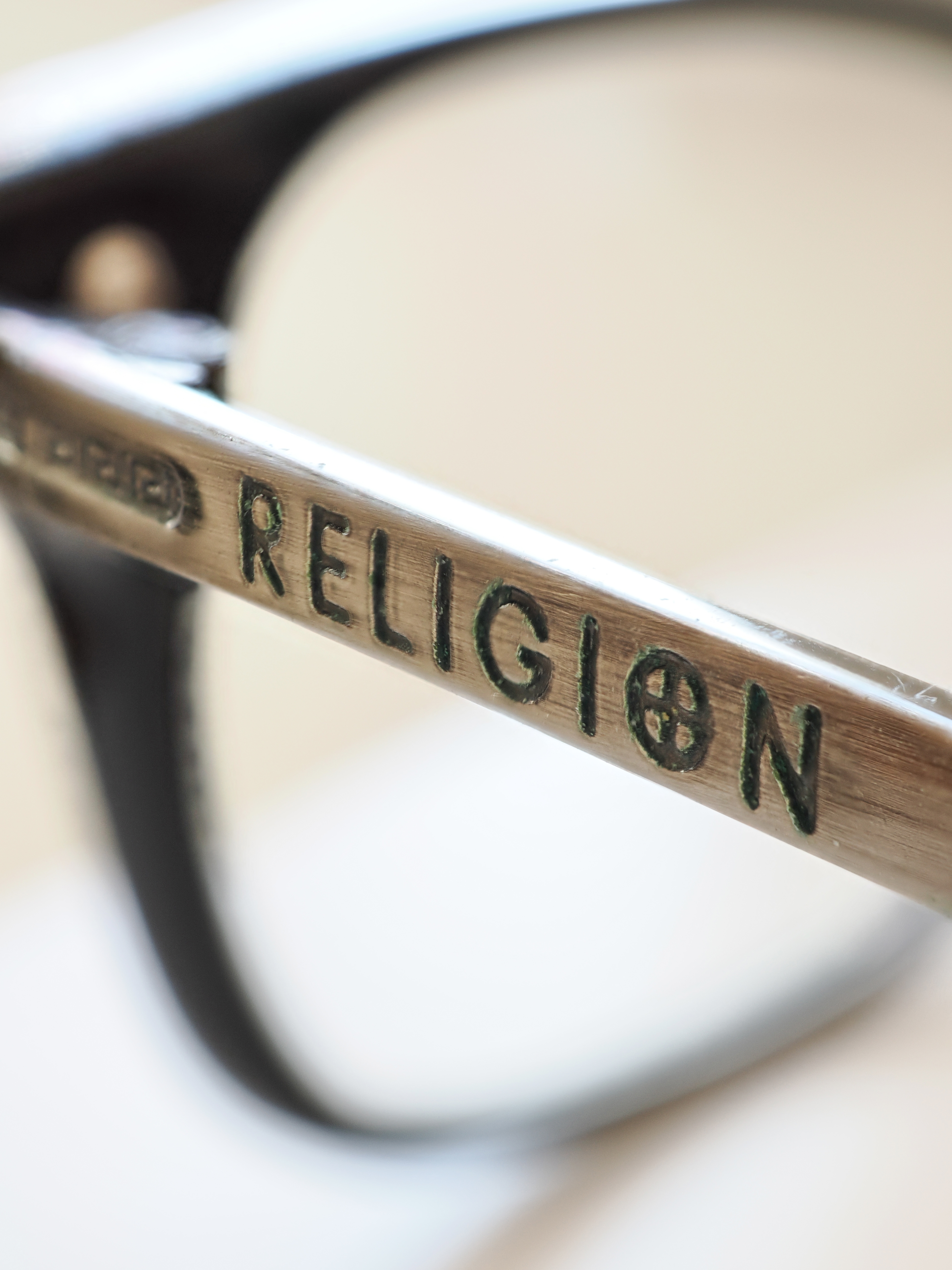

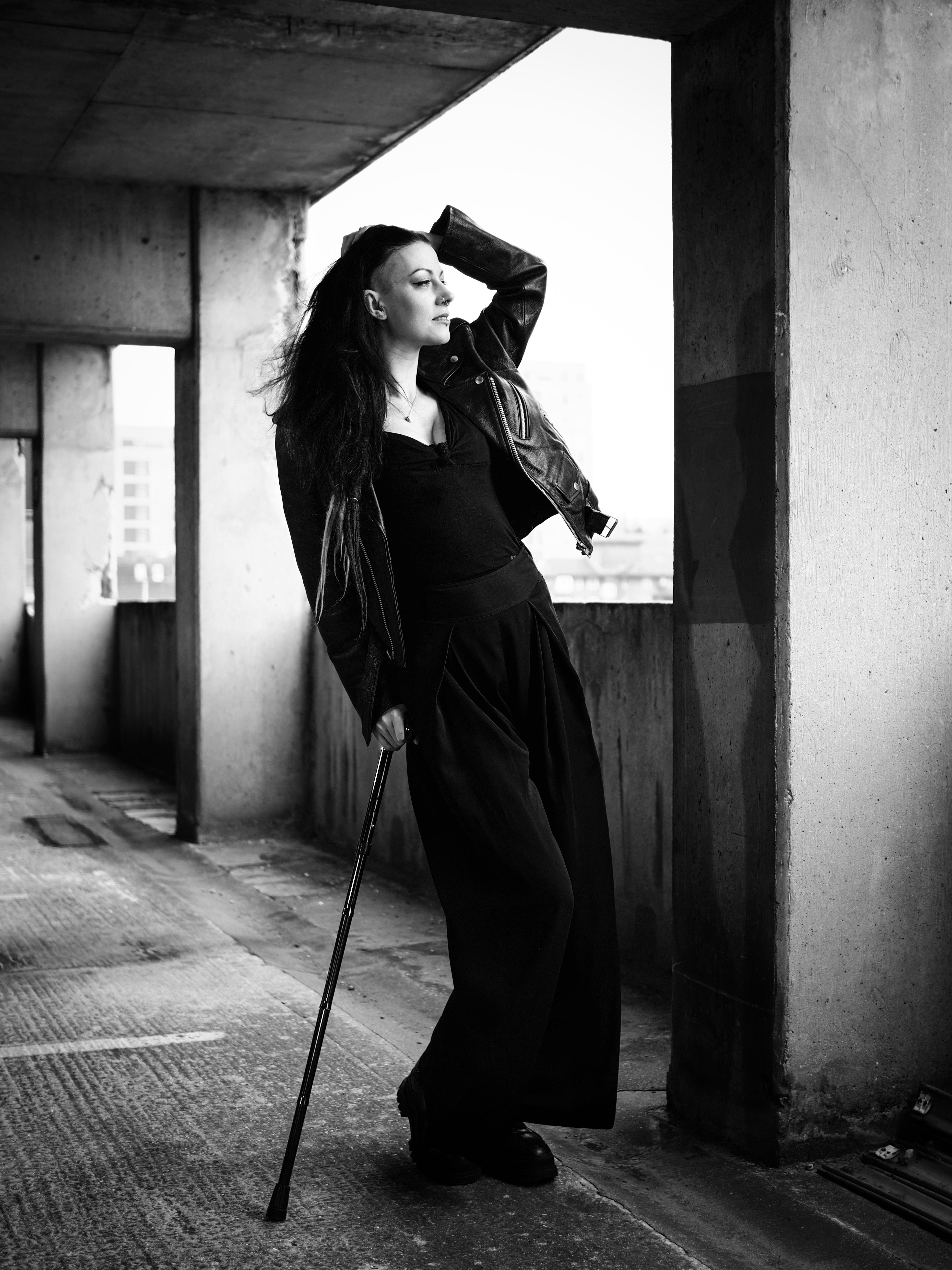
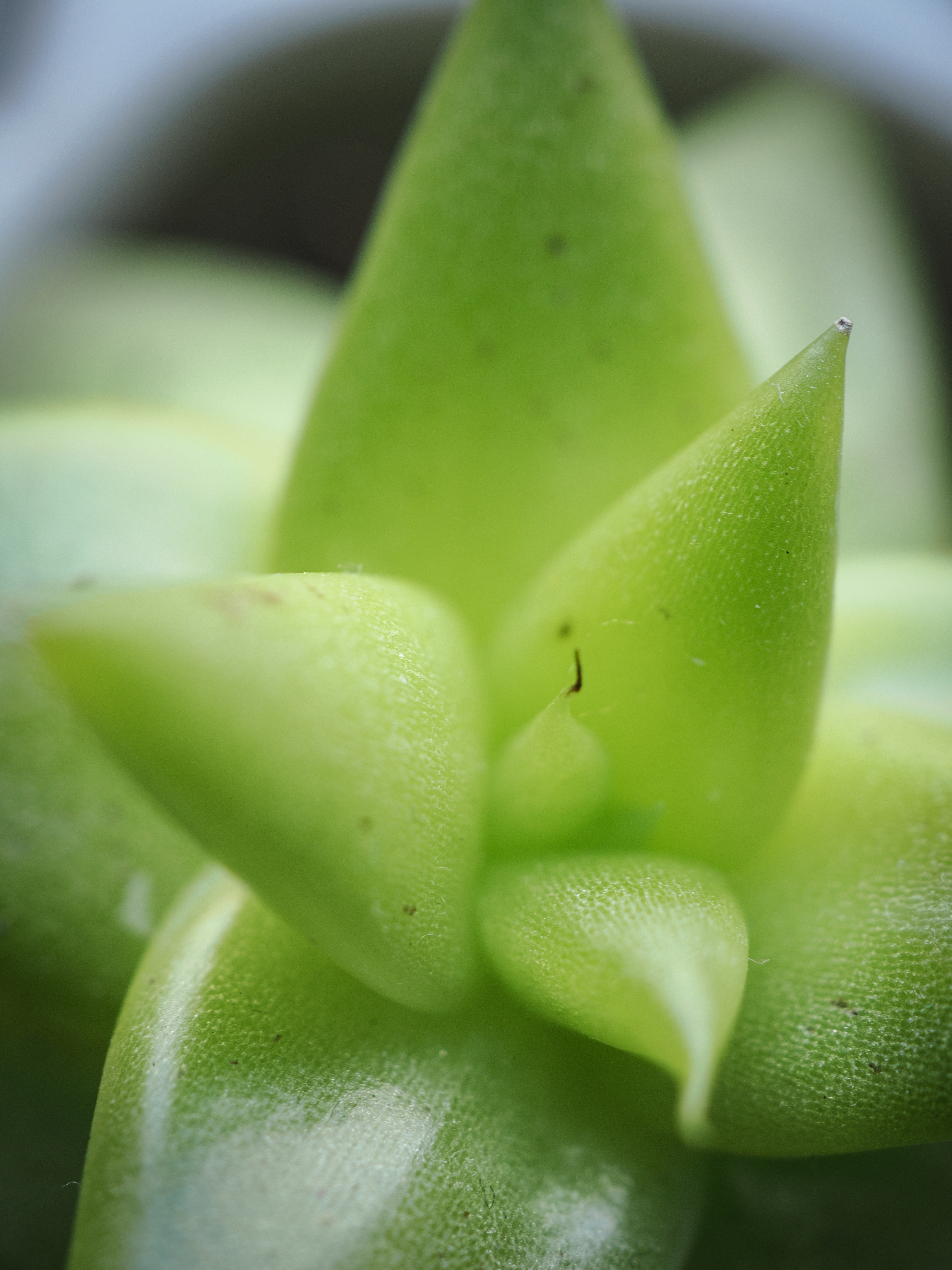
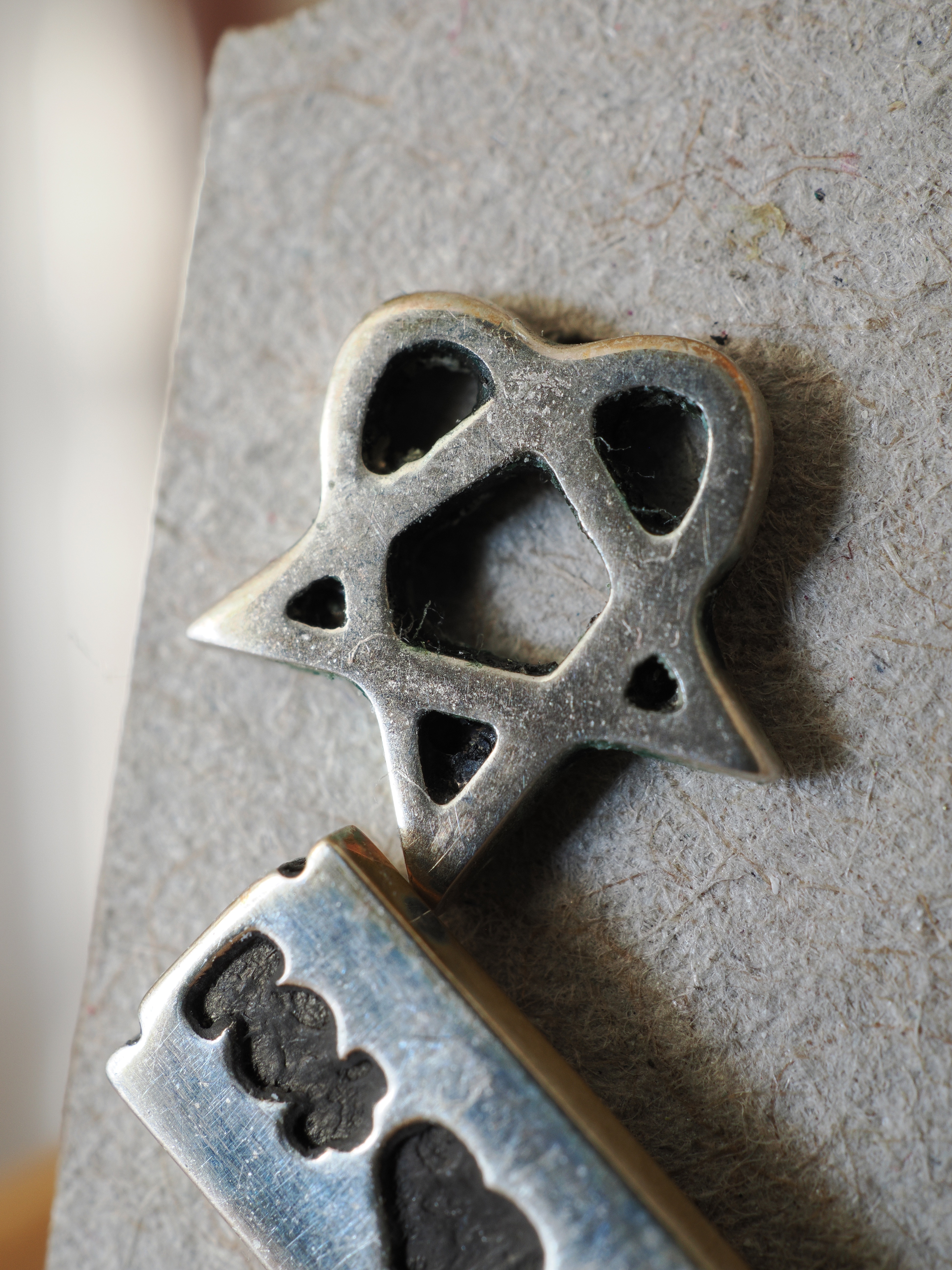

OM System OM-3: Video performance
As with the photographic capabilities, again, the OM System OM-3 shares the same tech as the OM-1 Mark II – so you can expect the exact same performance from this camera (with the observation that the autofocus feels ever so slightly improved, in my experience).
I feel I was a little harsh on the OM-1 Mark II's video specs when I reviewed it, largely because it was coming in the wake of the Panasonic Lumix G9 II – which is certainly a superior system for pure videography. However, I don't think the person looking at the OM-3 is weighing it up against the specs of the G9 II (or vice versa).
Still, the OM-3 offers a lot for the content creation crowd – including its two video modes that, like the Color Profiles, offer a degree of pre-production that makes it easier for storytellers to share their footage without having to master LUTs and grading. Both modes echo OM-Log400 for dynamic range, with OM Cinema 1 offering a more contrasty and golden starting point while OM Cinema 2 provides a softer look with a cyan bias.
The new shooting dial, with its fast access to Slow & Quick mode, really is an invitation to dive in and have fun with your video footage. Whether you want to snag an attention-getting hyperlapse at 1fps, or a stunning slow-mo at 240fps you can quickly snap into S&Q and shoot it – all with minimal fuss.
While I don't think anybody chooses OM cameras for their moviemaking chops, I do feel that the video capabilities of the OM-3 are more important than other models. I'm guessing that the crowd who will be attracted to this camera is the same crowd that's attracted to the X100VIs of this world – the style conscious shooter who's primarily interested in stills, but still wants a capable 4K camera with which to create content.
And the OM-3 definitely scores here. Nobody will accuse it of being the best camera for vlogging, but it's still a very capable one that will find an eager audience thanks to its cinema profiles, film presets and Art Filters that make it easy to crank out compelling content with minimal fuss.
OM System OM-3: Sample videos
Since the OM System OM-3 is largely identical to the OM-1 Mark II, I mainly messed around with the S&Q modes while shooting with a few different filters and presets in the first video.
To see what it's capable of in slightly more serious settings, the second video is me filming some wildlife with the OM-1 Mark II (which, again, has the same specs and tech inside, so the performance is virtually identical).
OM System OM-3: Verdict
The OM System OM-3 rekindles the kind of magic not seen since the Olympus glory days. This is a camera that celebrates the brand's heritage in terms of both looks and spirit, proving that style is substance, with a body that doesn't just look great but actually inspires you to pick it up and shoot with it.
And when you do, you discover a playful, charming, charismatic camera that's imbued with creativity. It literally puts its signature features at your fingertips – the Creative Dial, Computational Photography button, S&Q dial – and challenges you to go out and play with them to see what you can do.
I've waxed lyrical about the PEN-F for the past nine years because it's simply the most magical imaging machine I've ever used. It was almost the perfect camera for me, but it lacked modern trimmings like phase detect AF, 4K video, mic and headphone jacks, and the all-important weather sealing.
But the OM-3 has all those things and more, taking the tech from OM System's flagship camera and adding cherries on top like computational photography, algorithmic subject detection, 80MP 14-bit shooting… not to mention a body that, while I won't say is sexier than the PEN-F, is certainly just as sexy.
Which means that, all in all, I think the OM System OM-3 is the perfect camera for me. Whether it's the perfect camera for you will depend largely on your prejudice against Micro Four Thirds sensors. Because aside from depth of field being slightly more challenging to achieve, and the fact that there's only one memory card slot, there's is simply nothing not to love about this camera. And I am going to buy one.
(Due to OM System debuting a new RAW file format, we were not able to run our usual suite of lab tests in time for publication. However, the OM-3 uses the same sensor and processor as the OM-1 Mark II – and given that my testing demonstrates performance on par with the flagship camera, I see no reason to withhold a score. I will update the review with the lab data, once the RAW conversion software is available, but until then you can look at the OM System OM-1 Mark II's exceptional lab results.)
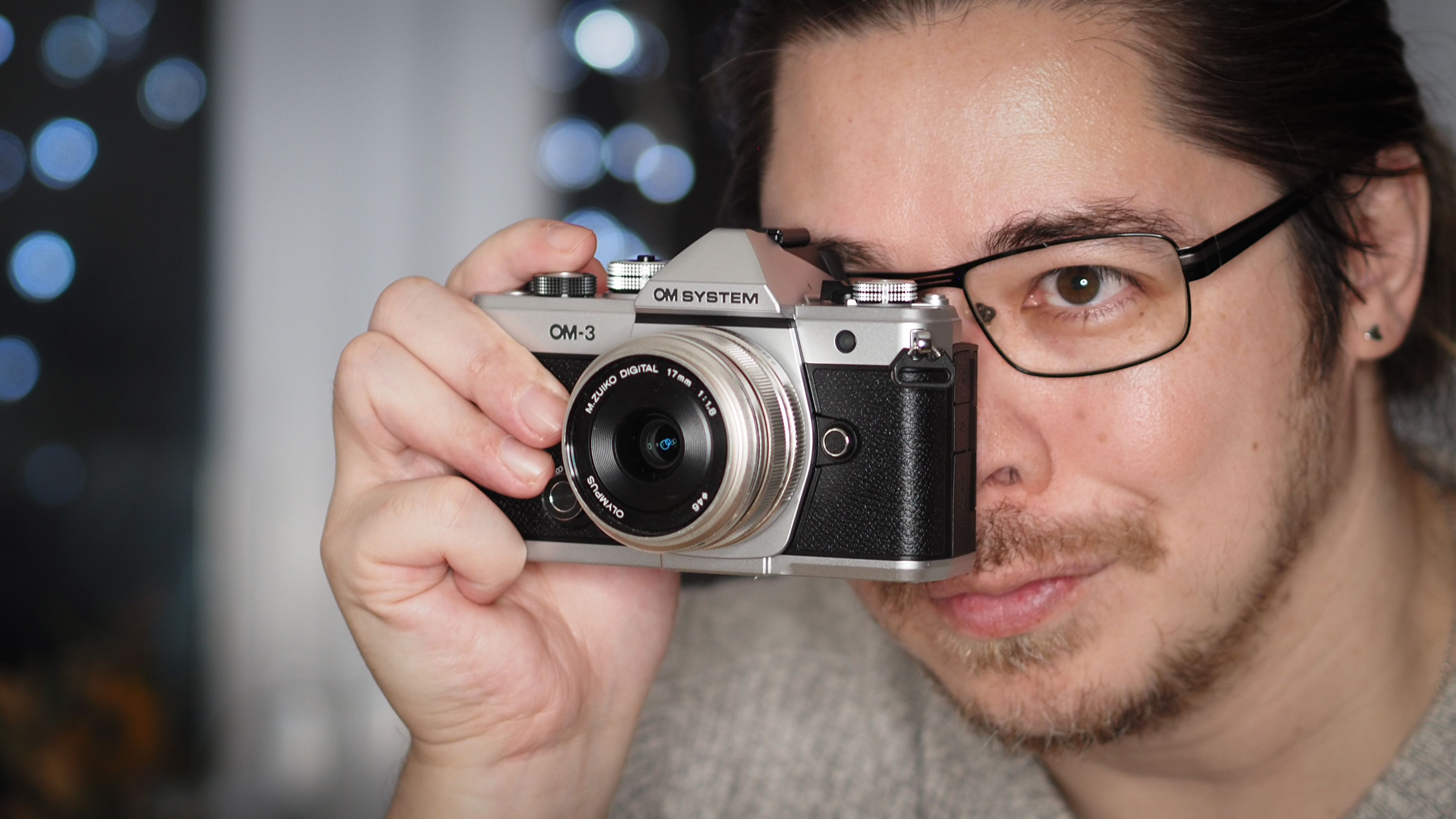

James has 22 years experience as a journalist, serving as editor of Digital Camera World for 6 of them. He started working in the photography industry in 2014, product testing and shooting ad campaigns for Olympus, as well as clients like Aston Martin Racing, Elinchrom and L'Oréal. An Olympus / OM System, Canon and Hasselblad shooter, he has a wealth of knowledge on cameras of all makes – and he loves instant cameras, too.
You must confirm your public display name before commenting
Please logout and then login again, you will then be prompted to enter your display name.

